28 July to 24 August











28 July to 24 August











Caitlan Mitchell Editor-in-Chief caitlan@reviewmags.com
Walk into almost any café, and the baking cabinet is a reflection of its personality. However, somewhere along the way, the humble scone and muffin became overly complicated. Cafés started offering creations with five different flavours fighting for attention, topped with swirls, drizzles, and sprinkles that looked better on Instagram than they tasted on the plate. The truth is, customers rarely ask for a peach, rosemary, and chilli muffin. They want a good cheese scone, or a blueberry muffin that
actually tastes of blueberries. Simplicity sells because it delivers comfort, familiarity, and consistency, the things people come back for.
Size is another part of the conversation that cannot be ignored. The oversized muffin or scone once had its moment, but most customers no longer want something that feels like a challenge to finish. When the only option is a scone the size of a dinner plate, the likely outcome is that two customers share one instead of ordering their own. That is a hit to the café’s bottom line. The smarter option is a middle ground, a portion generous enough to satisfy one, but not so big that it easily feeds two.
And then there is the butter. With the price of dairy on everyone's lips, operators might think



twice before automatically loading butter onto every plate. Asking the customer if they want butter not only saves cost, but it also gives them the choice. Some will still happily take it, others will not, and the café is not giving away product unnecessarily.
Sometimes, the best approach is the simplest one: well-made classics, sensibly sized, served thoughtfully. That is the kind of baking customers want, and the kind that keeps them coming back.

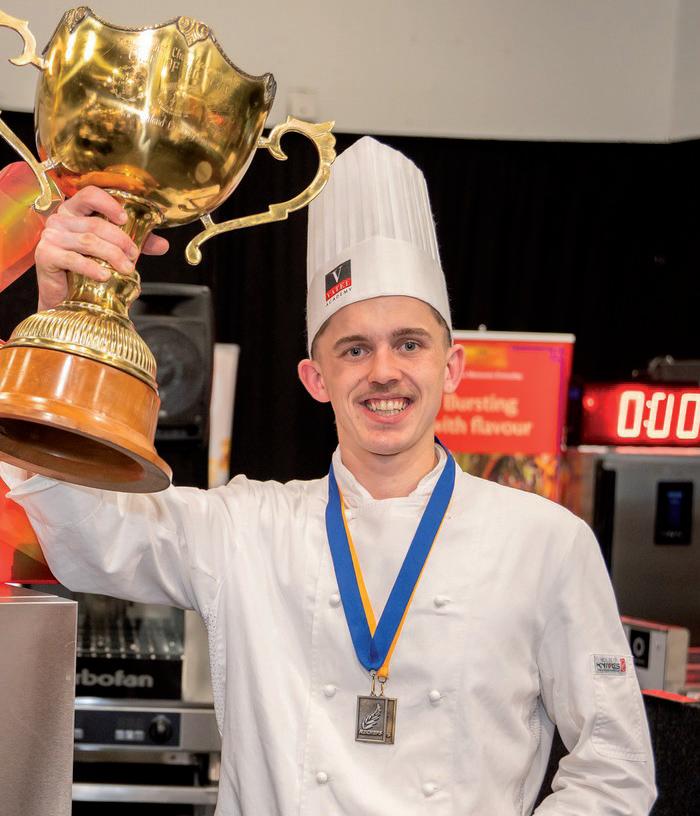







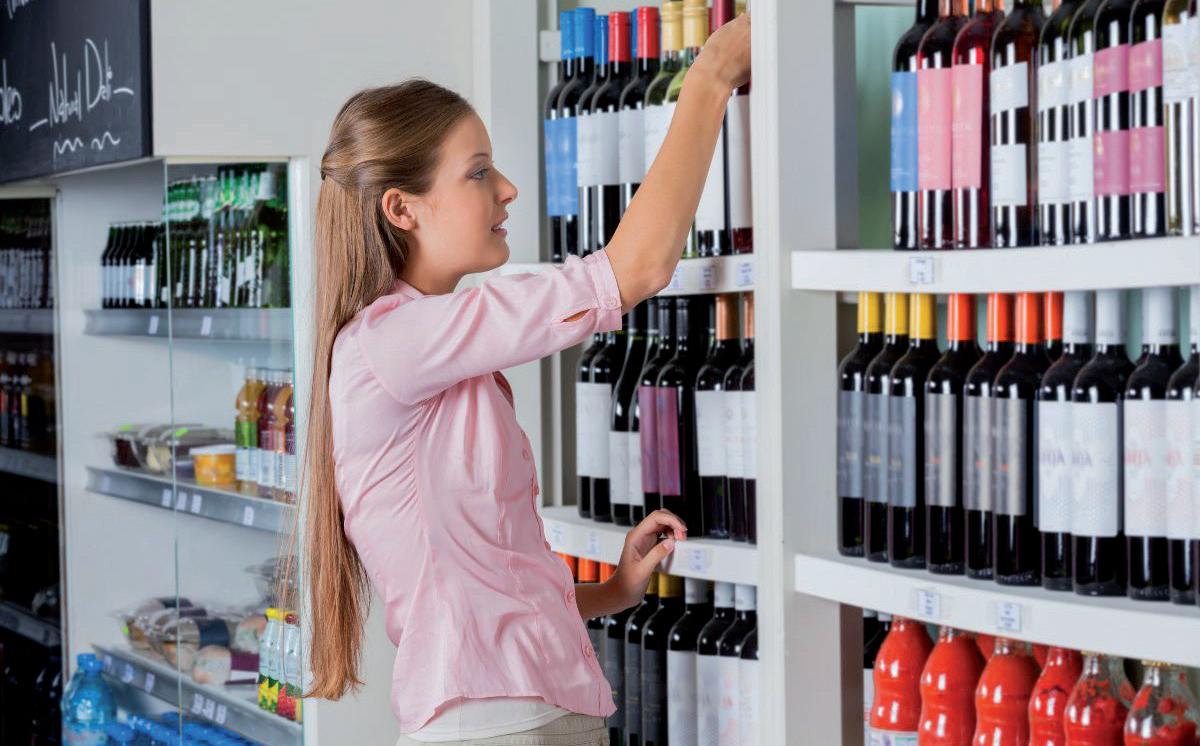
Alcohol Healthwatch (AHW) recently issued a media release stating that 34 percent of alcohol products have no pregnancy warning label.
The NZ Alcohol Beverages Council was so concerned with this statement that it asked AHW directly for information on which retail outlets and products were
not complying with the Food Standards Australia New Zealand requirements (FSANZ).
“There was widespread non-compliance regardless of the type or location of the premises and it was unhelpful to identify individual retailers as this existed on a widespread scale,” said AHW. Read the full story online

The Commerce Commission has issued its final decision to reduce interchange fees paid by Kiwi businesses to accept Visa and Mastercard payments.
It costs New Zealand businesses around NZD 1 billion a year to accept Visa and Mastercard payments, which is often passed onto their customers through surcharges and higher product costs.
The Commission has determined this cost is too high and has acted to reduce this cost for businesses by around NZD 90 million a year.
“This is an important step in our continued work to cut costs for businesses and consumers.
Read the full story online
Lower Hutt restaurant, Well Sushi, has been fined by the Employment Relations Authority for exploiting a migrant worker.
The Employment Relations Authority has ordered a Lower Hutt sushi restaurant to pay NZD 30,000 in penalties after breaching multiple employment standards, which negatively affected
a migrant worker.
The restaurant, Well Sushi, was previously ordered to pay the former employee, who was in New Zealand on a work visa, NZD 53,940.03 in wage arrears. This has since been paid to the worker who is now a permanent resident of New Zealand.
Read the full story online

Matthew McConaughey's award-winning Pantalones Organic Tequila will be available in New Zealand for the first time.
Pantalones Organic Tequila, co-founded by Matthew and Camila McConaughey, has continued its global expansion with an exciting launch in New Zealand. The award-winning
tequila will be distributed nationally by the team at Blanc Beverages, beginning with its launch at leading retailer Moore Wilson's.
Pantalones Organic Tequila has firmly established itself within the spirits industry, securing multiple prestigious awards, including two consecutive Double Gold Medals at the San Francisco World Spirits Competition for its Organic Añejo, and a Double Gold for its Organic Reposado at the SIP Awards.
Read the full story online

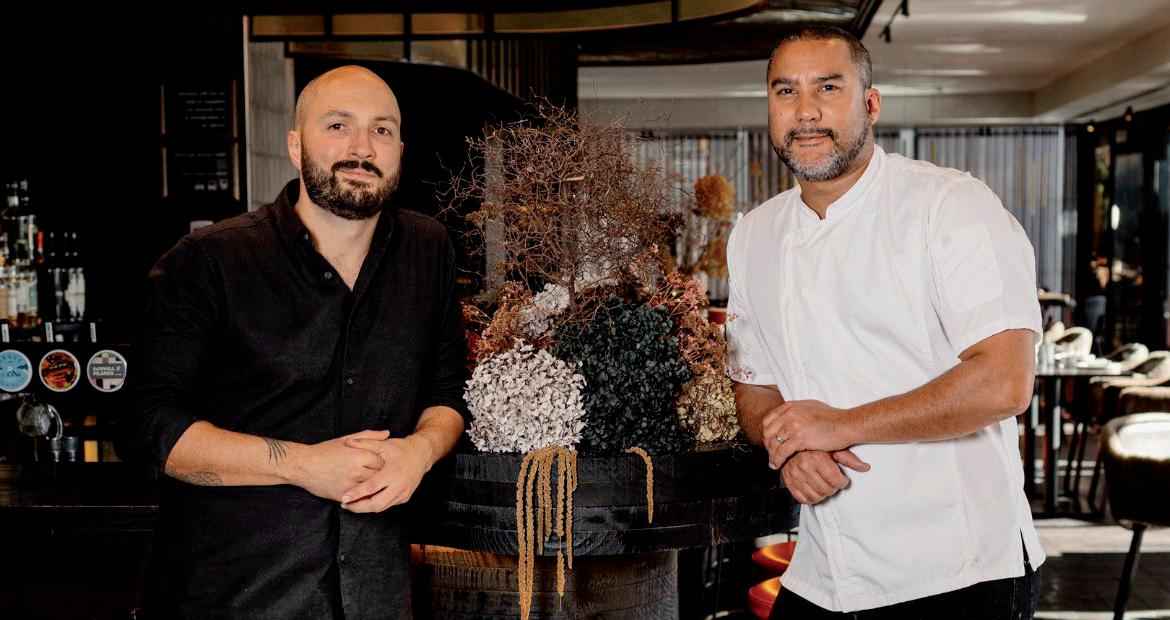
Appleton Estate has partnered with Gareth Stewart and Mixologist Adam Neal to celebrate Jamaican Independence Day.
This August, Appleton Estate has invited Kiwis to experience a powerful celebration of culture, flavour and heritage with an exclusive onenight-only event at Advieh Restaurant & Bar, in honour of Jamaican Independence Day on 6th August.
In partnership with renowned chef Gareth Stewart and award-winning mixologist
Adam Neal (Director of Parasol & Company), the event brings to life a bold, Jamaican-inspired menu and cocktail pairing.
Hosted at Advieh Restaurant & Bar, which is usually known for its Middle Eastern flavours, the evening will reimagine the space for an immersive Jamaican celebration.
Read the full story online
Popular Wellington cafe, Havana Lounge, has reopened against the odds and in the midst of a tough hospitality scene.
As Wellington's hospitality scene continues to face significant challenges, iconic Te Aro coffee destination bucks the closure trend with a bold reopening investment.
With over 50 venues having closed between Courtenay Place and Lambton Quay in 2024 alone, Havana Coffee Works has brought some confidence to the sector by reopening the doors of Havana Lounge, which has resided on Tory Street, Te Aro, for over 10 years.
Read the full story online
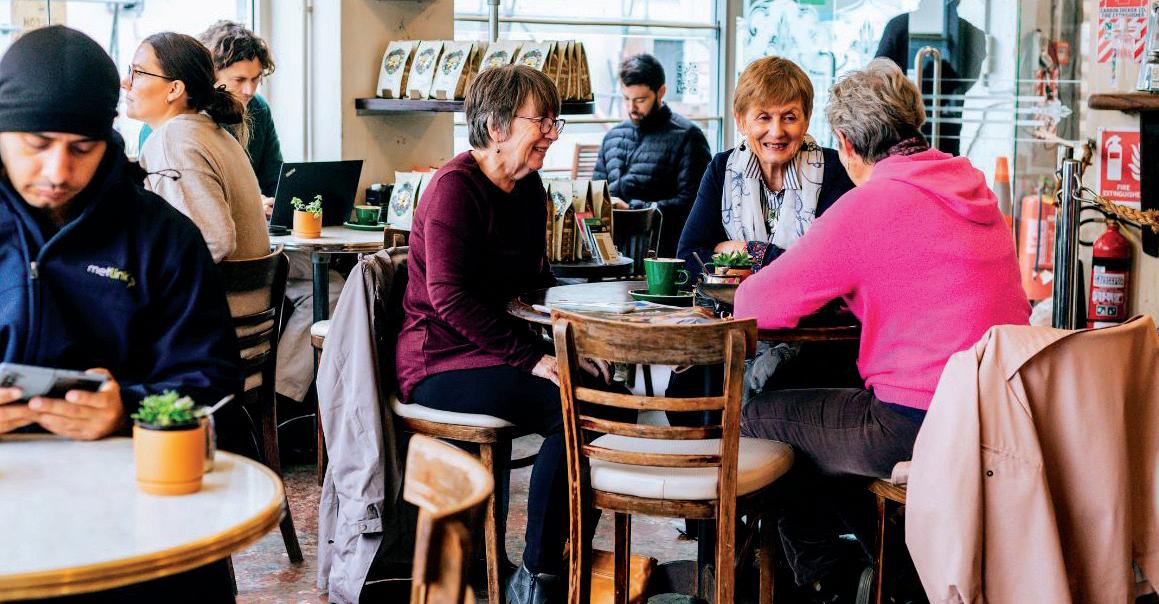
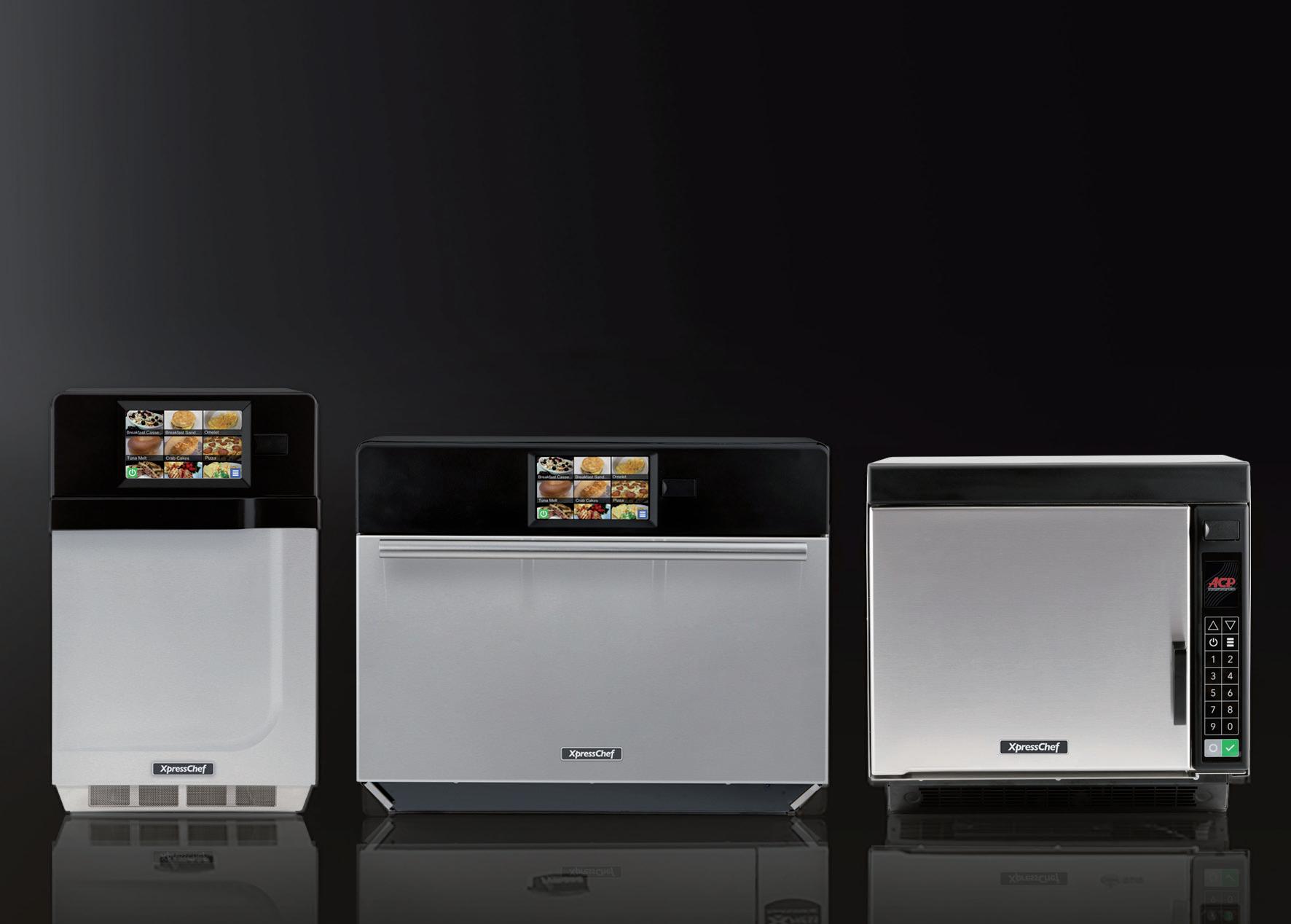

Menumaster delivers speed, efficiency, strength, and durability – which is why it is the microwave oven of choice for fast food chains, service stations, supermarkets, convenience stores, cafés and restaurants. Comprising a complete range of commercial microwave and accelerated microwave, convection, infra-red ovens designed to meet the needs of the most demanding hot food serving environments.




Hong Kong serves as a promising platform for global food importers and distributors to extend their reach into markets across Mainland China and the broader Asian region.

Food Expo PRO aims to strengthen Hong Kong's position as a business hub for the food industry in Mainland China, Asia, and the world. It provides a one-stop business platform that helps F&B industry players explore opportunities, build connections and foster innovation.
As a pioneer in the food and beverage (F&B) industry, the Expo has consistently monitored several key trends and innovations to capture the evolving dynamics of the food industry.
The Hong Kong Food Science and Technology Association will lead a group of Hong Kong companies to showcase their food-tech and packaging products and solutions. Recognising the promising landscape of the Halal Market and to better promote the potential of the halal food sector, the events
will delve deeper into the halal food landscape in Hong Kong. With the evolving coffee culture and growing demand for coffee worldwide, a new Coffee Zone will be launched at the fair to reinforce Hong Kong’s role as a gateway to the booming Mainland China and ASEAN markets.
Food Expo PRO also features a variety of seminars and forums covering the latest developments and market opportunities in the food industry. The Food Tech Symposium will focus on promoting non-additive foods and establishing a “Clean Label” standard in Hong Kong.
The concurrent Hong Kong International Tea Fair brings together a diverse range of products, including tea, tearelated items, and tea ware. The International Tea Event Space Design Competition 2025 aims to promote the culture of tea. Another fair highlight is the Hong Kong

International Tea Competition. Each day at the fair is filled with a variety of activities and events. Other events, such as the 1st GuangdongHong Kong-Macau Youth International Tea Art Competition 2025, Tea Tasting Sessions, and Tea Art Performances, offer an immersive exploration of tea’s rich history and latest trends.
The two fairs will continue to adopt the HKTDC’s EXHIBITION+ model that
integrates online and offline elements, extending face-toface interactions from physical events to the smart business platform, Click2Match.
Organised by the Hong Kong Trade Development Council (HKTDC), the Food Expo PRO and the Hong Kong International Tea Fair will be staged concurrently from the 14th to the 16th of August 2025, at the Hong Kong Convention and Exhibition Centre.
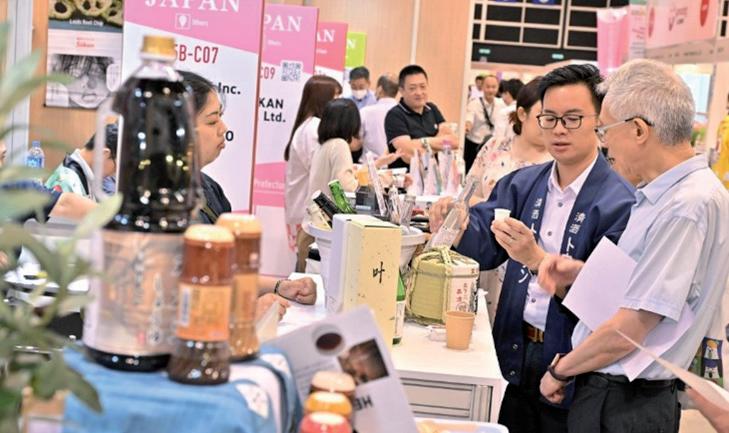

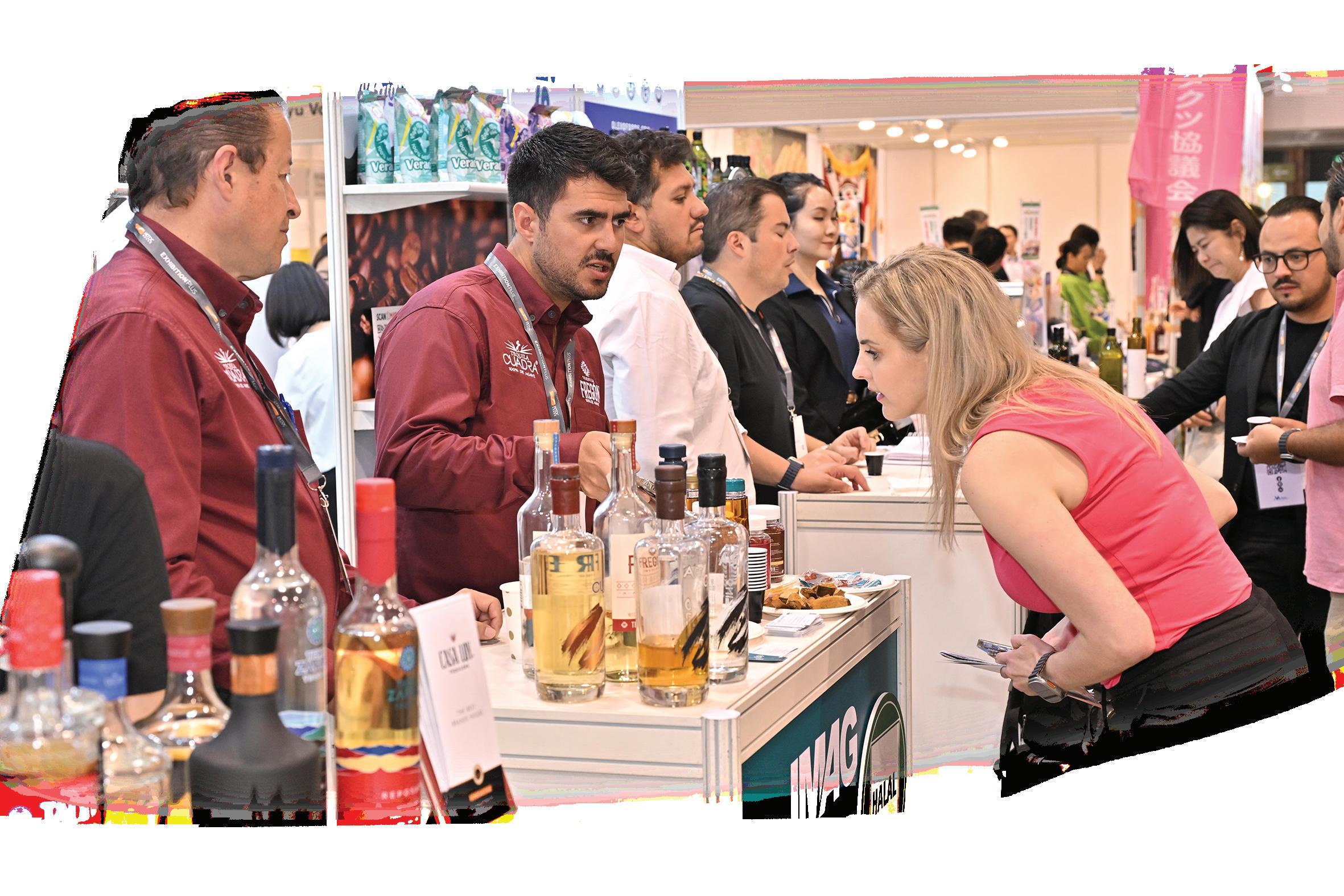








It is no secret that customers enjoy baked goods while enjoying their morning coffee, or as a sweet treat after a main course. But for some eateries, practicality can prevent offering baked goods on the menu.

For Baker Boys, there is an obvious solution to offering delicious baked goods that will be popular with customers and simple to prepare.
Baker Boys was founded in 1991 in Christchurch, and is still owned and operated by the original family to this day. Baker Boys manufactures and sells a wide range of frozen and ambient finished baked goods, which are sold into both retail and foodservice avenues across New Zealand and Australia.
Channel Manager Jarrod Bolton said Baker Boys’ product categories include sweet slice, biscuits and savoury, which can be found under either our own Baker Boys brand, or a private/white label.
He said the general market is demanding innovation, and there are various new products entering the market that appeal to the younger generation. From twists on classic flavours adopted into new formats, new brightly coloured and cleverly named sweet slices, to filled donuts. For breads, Bolton said the flavour of Ube (purple yam) has been a major
trend for customers. He added that ube is visually appealing, and provides a sweet nutty flavour, with hints of vanilla.
“People shop with their eyes. Baked goods are generally an impulse buy, so it has to have great packaging, followed by a product that visually looks appealing. Lastly, it needs to taste good; otherwise, you won’t get a repeat sale or benefits from word of mouth,” he said.
Like all cases, Bolton said this needs to be carefully considered with who a business’ clientele are, what they are looking for, and what the value-add opportunities are.
He considered a prime example of this being sweet treats like donuts being positioned at the checkout, which he said was a clever way to add a range of baked goods to the menu and make them appealing to customers.
When exploring baking trends that deliver the best margin with minimal preparation for businesses, Bolton said it was a case-by-case scenario that every business needed to evaluate. On average, he considered donuts, pastries and muffins or cupcakes to be the most general items that could suit a majority of businesses, and were largely easy to
prepare. However, he said the recent consistent cost increase of butter will affect baked good margins in general, particularly for pastries.
He said New Zealand has had a shortage of qualified bakers for many years now. Baking in-house will allow operators to maximise product margins, but this will come with the cost of increased labour and the equipment needed. Bolton added that there are advantages to buying-in baked goods. These included consistency of finished product, overall cost control, and in some cases, the ability to offer a wider range of baked and speciality goods.
Finished product consistency is an essential requirement for baked goods, according to Bolton. He said this goes for any finished goods product.
“Inconsistencies in a finished product can deter initial and/or repeat purchases, resulting in lost revenue. Ways to guarantee consistency could be offering a small overall range, allowing you to quality control at each point of the production process. Alternatively, automation of the production process can be achieved by using specialised equipment.”





Bakery chains have the task of ensuring their menus have the right mix of flavours, innovation and nostalgia that will appeal to a customer base around the country. For Bakers Delight, this has meant prioritising adapting to change and listening to customers.
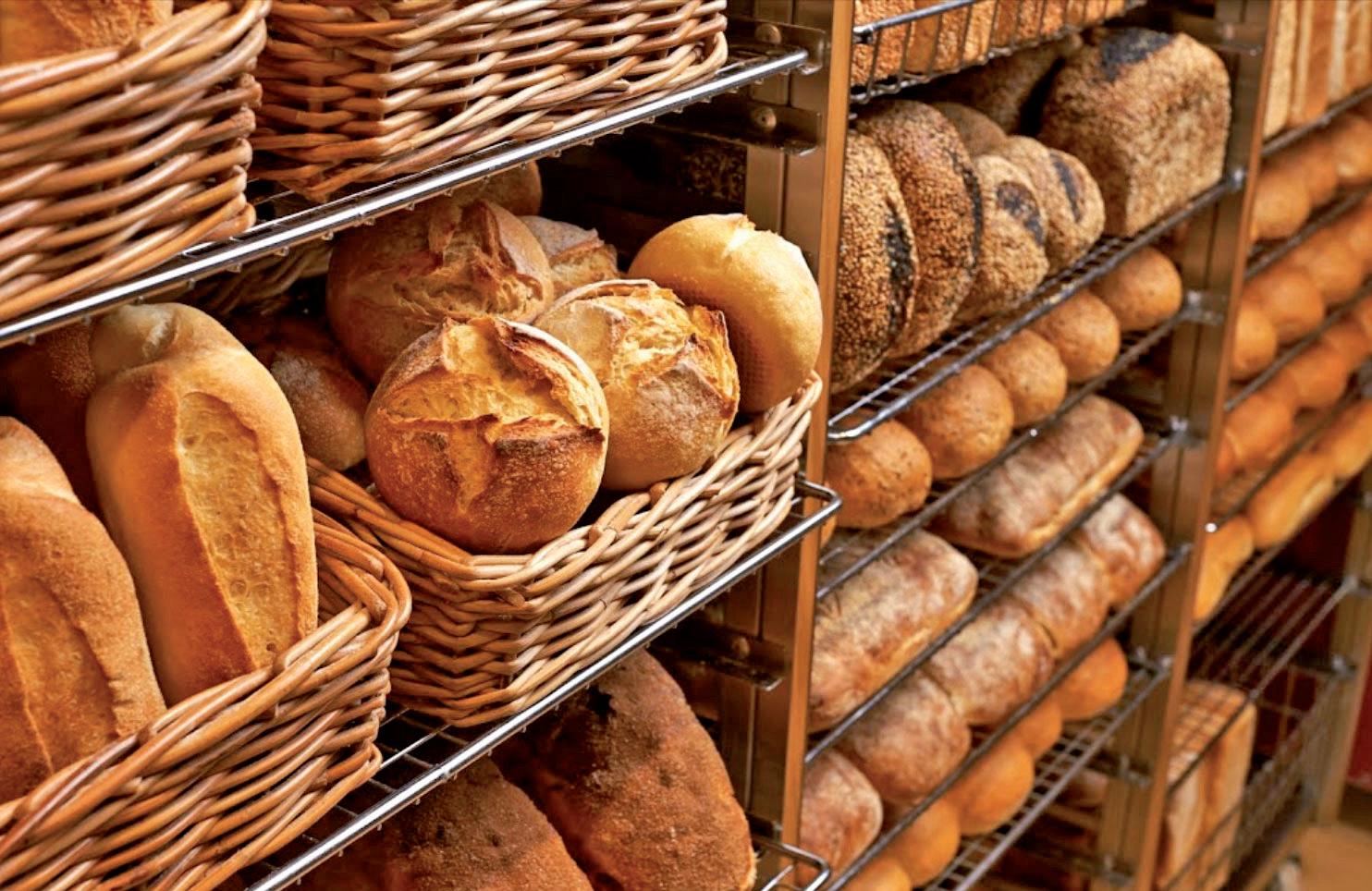
As a Kiwi-owned business, Bakers Delight has prioritised using New Zealand brands wherever possible. Trusted local brands like Barker’s of Geraldine and Dairyworks are featured in its key product lines, which National Brand Manager Karen Boey said have helped to support local producers while delivering the quality customers are looking for.
While Bakers Delight’s proprietary ingredients continue to come from Australia, where its parent brand is based, the chain has continued to actively explore more ways to hero local ingredients, especially in its artisan and seasonal ranges.
Classic flavours like cheese, garlic and berries continue to resonate with customers. Boey said this is largely due to them being comforting and timeless.
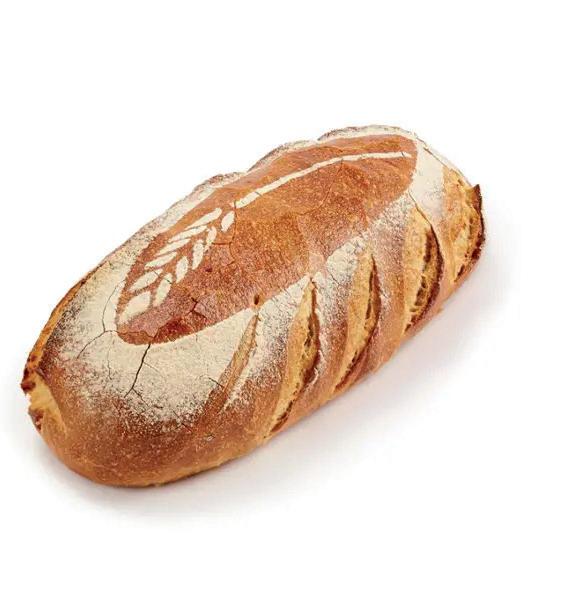
More recently, Bakers Delight has seen strong interest in flavour mashups that
“While we stay true to our roots, baking fresh bread every day, we’re excited to explore twists on the classics. Trending flavours and nostalgic
favourites are gaining traction, giving us an opportunity to surprise and delight our customers,” said Boey.
Bakers Delight has introduced a range of products to suit different dietary needs, such as the LowFOD loaf for sensitive tummies and its Hi-Fibre Lo-GI range, which provides sustained energy as a healthier alternative to white bread. A large variety of vegetarian and vegan options has also been added to the menu to support its growing conscious community. Boey added that the chain will always consider new and innovative ways to make its range more inclusive, without compromising on taste, quality or ease of production.
Balancing innovation with tradition has been an important element of introducing new flavours and products for Bakers Delight. Boey said this starts with what the chain does best, baking fresh, quality bread daily. From there, it builds on tradition by testing new flavours that feel exciting but still familiar to its customers. She said it has become focused on keeping the classics people love, while introducing thoughtful flavours and advancements that keep customers coming back for something new.
Amid changing customer purchasing behaviours, Bakers Delight has seen a noticeable swing towards customers choosing products that align with health
and wellness trends. This has made staples like its Hi-Fibre Lo-GI range increasingly popular, providing a healthier alternative to traditional baked goods.
Boey added that Bakers Delight has always maintained a range that includes options suitable for those with dietary restrictions, ensuring a more inclusive selection for all customers.
Nostalgic comfort has remained important as well. Recently, Bakers Delight reintroduced the Sally Lunn, a true Kiwi classic, which has brought a lot of warm, nostalgic feedback from its long-time customers who’ve grown with the brand.
Bakers Delight New Zealand has continued to innovate while staying true to its foundations as a brand, striking the right blend of tradition and contemporary customer preferences.
“We see our bakeries evolving as trusted locals for fresh, wholesome food that meets today’s more healthconscious and savvy customers. By baking fresh daily and using quality ingredients, we provide convenient, nourishing options that stand out in the wider foodservice sector.”
In today’s economic climate, with rising food prices, Boey said Bakers Delight was focused on delivering real value and relevance, making sure its customers can enjoy a fresh loaf, great taste and nutrition without compromise.



www.reso.co.nz | i. resofinefoods_ | f. resofinefoods
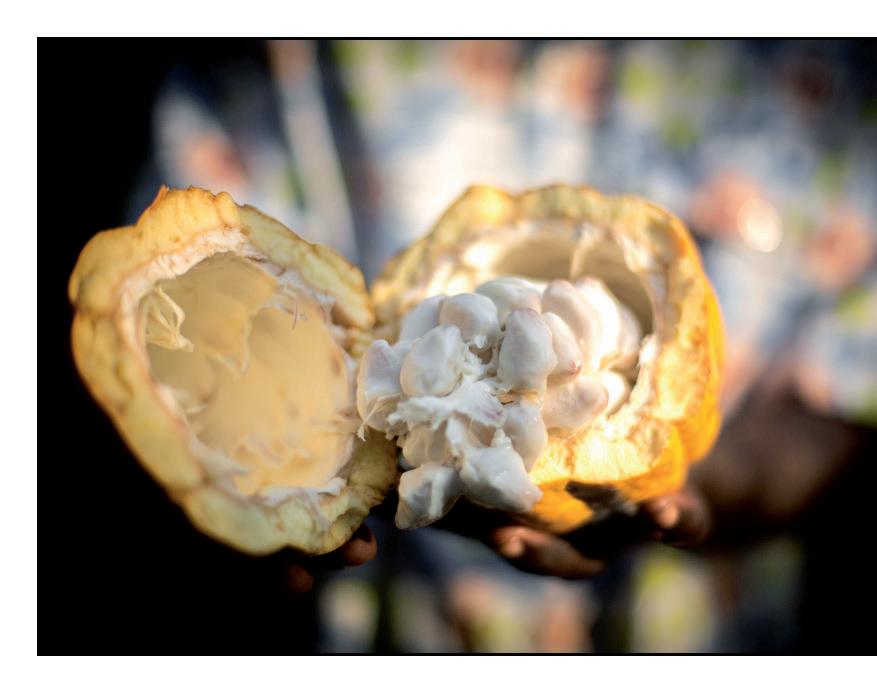

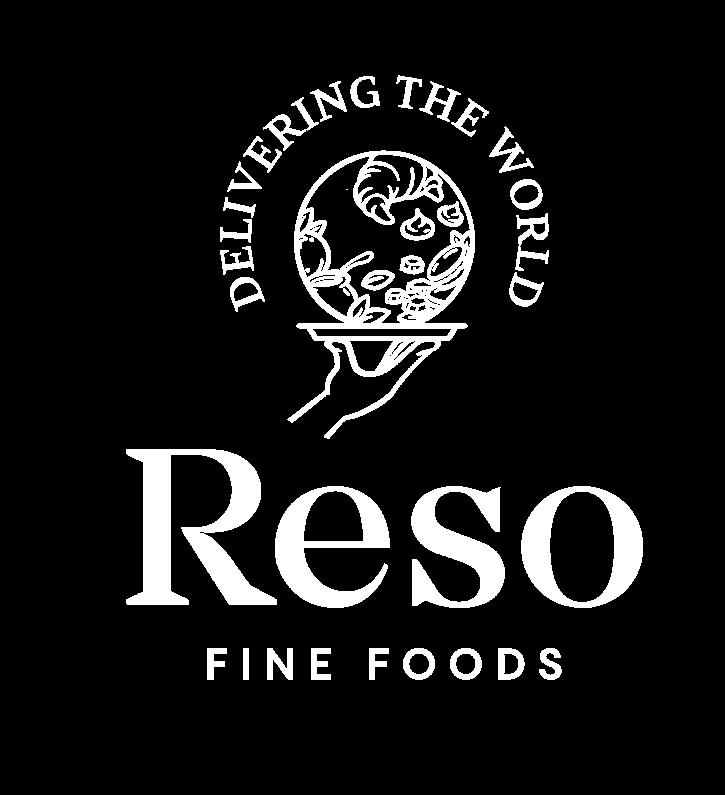


Once known for dry, crumbly textures and short shelf life, today’s gluten-free products are increasingly meeting consumers’ expectations.

This is mainly due to advancements in ingredient technology, particularly in the use of starches, gums, and proteins to replicate the functionality of gluten.
While around one percent of New Zealanders have coeliac disease, the demand for gluten-free products extends well beyond medical necessity. In the U.S., for example, 25 percent of consumers say they actively avoid gluten when shopping for food and drink. This shift means gluten-free bakery needs to appeal to a much wider audience, not just in terms of dietary needs, but also in taste, texture, and overall eating experience.
Leaders in specialised food, beverage and supplement ingredients, Hawkins
Watts said the key challenges in glutenfree baking are structure and shelf-life. Without gluten to provide elasticity and strength, alternative ingredients need to work together to create the right crumb, mouthfeel, and moisture retention. Hydrocolloids, modified starches, and proteins all play a role in overcoming these challenges, with different combinations needed depending on the product type.
Taste is also a key driver for consumers, and brands are continuing to experiment with new base ingredients and flavour innovations to enhance sensory appeal.
Hawkins Watts said that gluten-free formulation is highly technical, but with the right ingredient combinations, it’s possible to create products that don’t feel like a compromise. As ingredient technology continues to evolve, so too does the potential for gluten-free bakery, opening up exciting possibilities for the future.
For businesses currently experiencing issues with their gluten-free products, get in touch with Hawkins Watts’ technical team and in-house baker.
Contact: Lundi Chhun - Business Development Manager.
Email: lundi@hawkinswatts.com
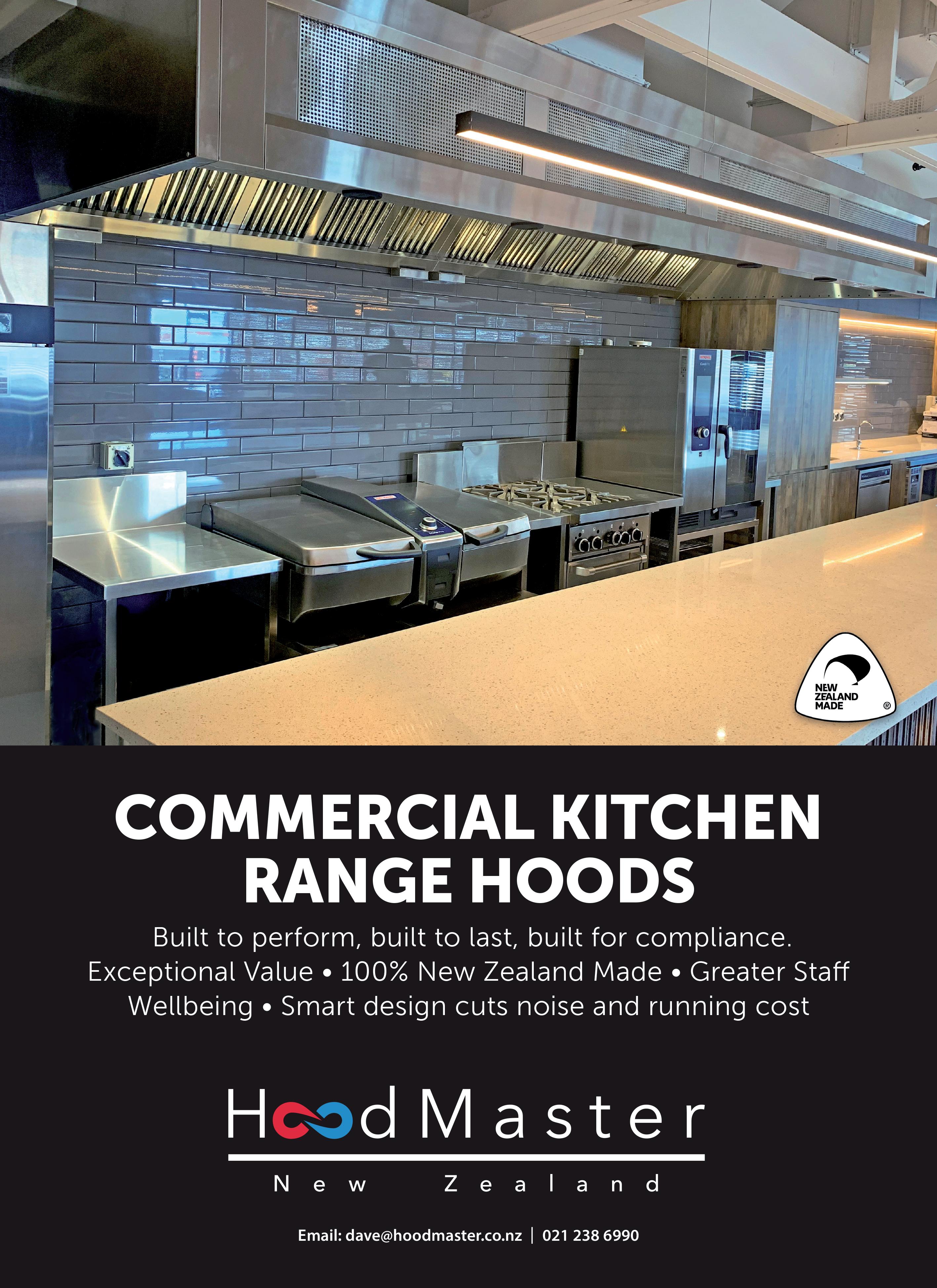
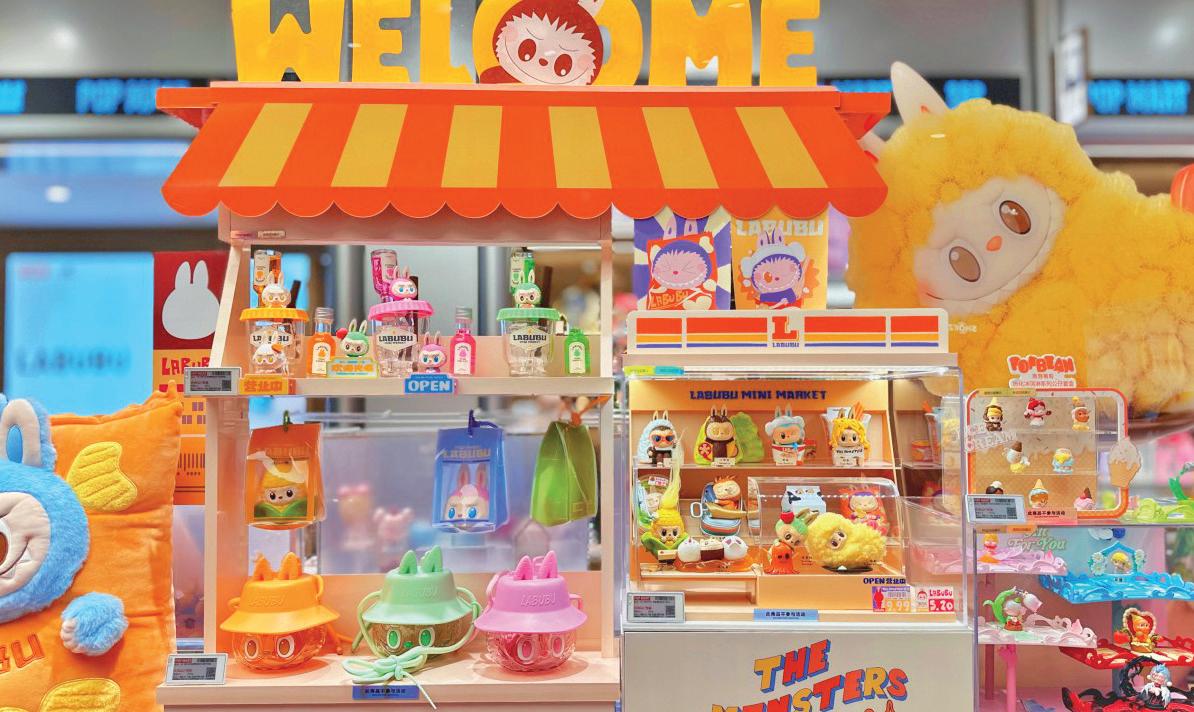
Recently, Labubu, a character that breaks conventional aesthetics and went viral for its unconventional charm, has sparked a buying craze among young consumers worldwide. Collaborative products featuring Labubu are flying off the shelves, some commanding resale premiums rivalling gold.
This trend has also swept into the baking world, from Los Angeles and Tokyo to London, Moscow, the UAE, and Singapore. Labubu-themed desserts are instantly sold out wherever they appear, quickly becoming the hottest items in-store.
Whether it’s a boutique dessert shop in Singapore, a supermarket chain in the UAE, or a high-end bakery in China, Labubu-inspired cakes are trending across social media.
Young consumers see them as musthave collectables and “social currency” to share online. Some limited-edition Labubu cakes have even been resold at triple their original price, turning them
into the luxury goods of the pastry world.
At a premium patisserie in Moscow, a Labubu-shaped chocolate sculpture cake was priced in the tens of thousands of rubles, sparking heated debate across local social platforms. In a UAE shopping mall, Labubu-themed ice cream sold over 300 servings in a single day, becoming the latest must-try for Middle Eastern dessert lovers.
Meanwhile, a viral bakery in Singapore broke records with over 1,000 preorders in one day for their Labubu collab cake.
Back in China, local players are also joining the race. During Children’s Day, artisanal dessert brand Black Strawberry
launched a Labubu-themed chocolate cake in collaboration with Pop Mart. Combining licensed IP with exquisite craftsmanship, the cakes sold out rapidly, triggering a wave of social media posts.
At the heart of this craze lies the spillover influence of Pop Mart’s IP empire. Labubu, already a symbolic figure in the designer toy community, embodies a subversive “ugly-cute” aesthetic and frequently collaborates with celebrities and streetwear brands, cementing its place in Gen Z’s cultural landscape.
As Labubu transitions from toys to desserts, the familiar “blind box logic” seamlessly blends with the consumption of pastries. This shift has generated tremendous attention and fundamentally disrupted traditional pricing and consumption models in the baking industry.
From “collecting Labubu” to “eating Labubu,” today’s consumers aren’t just buying a flavour, they’re buying emotional value, cultural identity, and social shareability. It’s a clear signal: in the modern baking industry, designdriven products and co-branded IP are fast becoming key drivers of premium pricing and brand loyalty.
A new wave of consumer behaviour is emerging: shift the perspective, spark deeper resonance; emotional spending, socially-driven sharing.


GILMOURS STORE CREDIT $5,000 VOUCHER* *For every $500 (excluding GST) spent on Butchery products in 1 receipt or invoice, go in the draw to win a
For every $150 (excluding GST) spent on Butchery products in 1 receipt or invoice, go in the draw to win



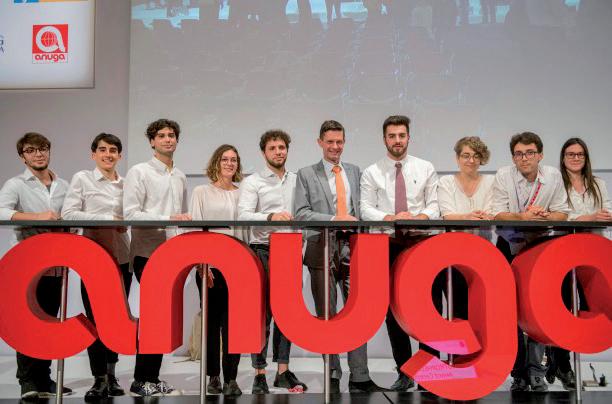
Anuga has underlined its claim to be the industry’s innovation platform once again this year.
With its renewed collaboration with Ecotrophelia Europe, the most important European competition for sustainable food innovation, Anuga is creating a stage for visionary product ideas, young talents and forward-looking entrepreneurship.
In the scope of Anuga 2025, which is being staged in Cologne from the 4th to the 8th of October, the European final of Ecotrophelia will take place in the Congress Centre North on the 7th and 8th of October. The festive award ceremony will be held in the Trend Zone on Boulevard North.
“For us, the partnership with Ecotrophelia Europe is a strategic pacesetter for the entire food industry. Together we are creating a platform where the highest level of sustainable innovation, young entrepreneurship and industrial networking come together,” said Jan Philipp Hartmann, Director Anuga.
Anuga is consciously sending a signal with its cooperation with Ecotrophelia Europa: promoting young talent, creating sustainable added value, and shaping the future of the food industry.
“We are delighted to be back at ANUGA for the 2025 competition. Our collaboration with Koelnmesse provides the foundation for our efforts to bring our competitors together and to give them the opportunity to experience how the food industry innovates in a rapidly changing world. We value the support and creativity of the ANUGA team so that we can showcase our emerging talent in action,” said Maarten van der Kamp, President of Ecotrophelia Europe.
Ecotrophelia Europe is considered to be the “Champions League” of food innovation and has been shaping the European innovation discourse in the food industry for over 25 years.
Every participating country organises a national preliminary round where the most innovative concepts for sustainable food products are selected and developed by student teams comprising
between two and ten members. The respective winning teams subsequently compete against each other in the European final, which is staged during Anuga. The respective food associations coordinate the national rounds.
The competition is organised by EEIG (European Economic Interest Grouping) Ecotrophelia Europe, an alliance between seven national food associations and the European industry organisations, FoodDrinkEurope and EIT Food.
The competition aims to establish a European-wide innovation ecosystem and transform sustainable product ideas from colleges and universities into marketable concepts in the long term. Participants benefit from direct contact with industry, investors, and project partners.
For the first time, Korea, a nonEuropean country, will participate in the Ecotrophelia Europe competition, a particularly fitting expansion as Korea is also the official partner country of Anuga this year. This inaugural participation marks a significant step in increasing the competition’s international visibility and underscores the global relevance of sustainable food innovation.
The organisers are especially pleased to welcome a Korean student team of four members this year, competing with their innovative product, “To-flex.” The connection between Korea as Anuga’s partner country and as the first nonEuropean participant in the Ecotrophelia Europe competition is a strong symbol of growing global networking and the increasing importance of forwardlooking food concepts.
Staging the European final at Anuga is a further milestone in the development of Ecotrophelia Europe and, at the same time, an enrichment for Anuga itself: it brings fresh ideas, new target groups, and valuable impulses to Cologne for the entire food industry.



Located in the Tasman countryside, Kiwi-owned and operated business, Clayton Hops, is the proud operator of New Zealand’s premier hop processing, packaging and cool store facility, nestled on a picturesque 16-hectare block of land.
Each of its farms (Battery Hill Hop Farm, Blue Rock Hop Farm, Korere Hop Farm and Mt Arthur Hop Farm) has its own modern, high-capacity and centralised harvesting facilities, comprising hop picking, sorting and drying equipment. These provide a real edge at harvest time, allowing the team to pick hops in their prime and at scale.
“Hop variety harvest windows can change yearly, both in timing and length,
and often overlap. Crucially, we have substantial and reliable capacity to ensure all hops are picked at the right time. Our flat-bed drying kilns are exhaust and fume-free,” said Belinda Brosnan, head of marketing at Clayton Hops. Being fully integrated has allowed the business to maximise product quality, speed to market and most importantly, customer satisfaction. The cutting-edge plant, equipment, controls and process design has the capacity of 2,500 to 3,000 kgs of T90 hop pellets per
hour, far exceeding anything else in New Zealand.
In addition to processing hop pellets, the facility has been expanded to process the unique Amplifire concentrated lupulin pellets and Amplifire fresh hop oil. The business has also installed a brewery to enable the team to test new products and hop varieties.
Amplifire hop oils and concentrated hop pellets were developed based on customer insights. Brosnan said that brewers have sought more efficient,


sustainable and flavourful products to meet the needs of their businesses and craft beer consumers.
“The response and uptake from the global brewing community has been incredible - we have installed further infrastructure at the processing facility this year to keep up with demand.”
The team at Clayton Hops are also very passionate about sustainability. Developing the Amplifire hop oils as a product with a very low carbon footprint has been a testament to this. The business also partnered with BX to measure its environmental performance across four key areas – soil health, water, waste & energy, and biodiversity.
Looking ahead, Clayton Hops has several new hop varieties in its innovation pipeline that they are very excited about and have had very promising responses from international brewers.
Brosnan mentioned that
Clayton Hops’ first exclusive variety has sweet peach, juicy orange, ripe passion fruit, and sticky mango characteristics, which make it a very appealing and unique combination of aromas for craft brewers.
Clayton Hops NZ is ready to showcase its innovation at the upcoming drinktec fair from the 15th to the 19th of September 2025.
“For us, drinktec is a great opportunity to not only showcase our products to a global audience, but also understand the broader beverage market and key innovations shaping the category at an international level,” added Brosnan.
“It is an excellent platform for a New Zealand company to not only fly the Kiwi flag in the beverage ingredients space but also understand how the category is evolving and how we can keep pushing ahead with creative solutions to keep up with that.”





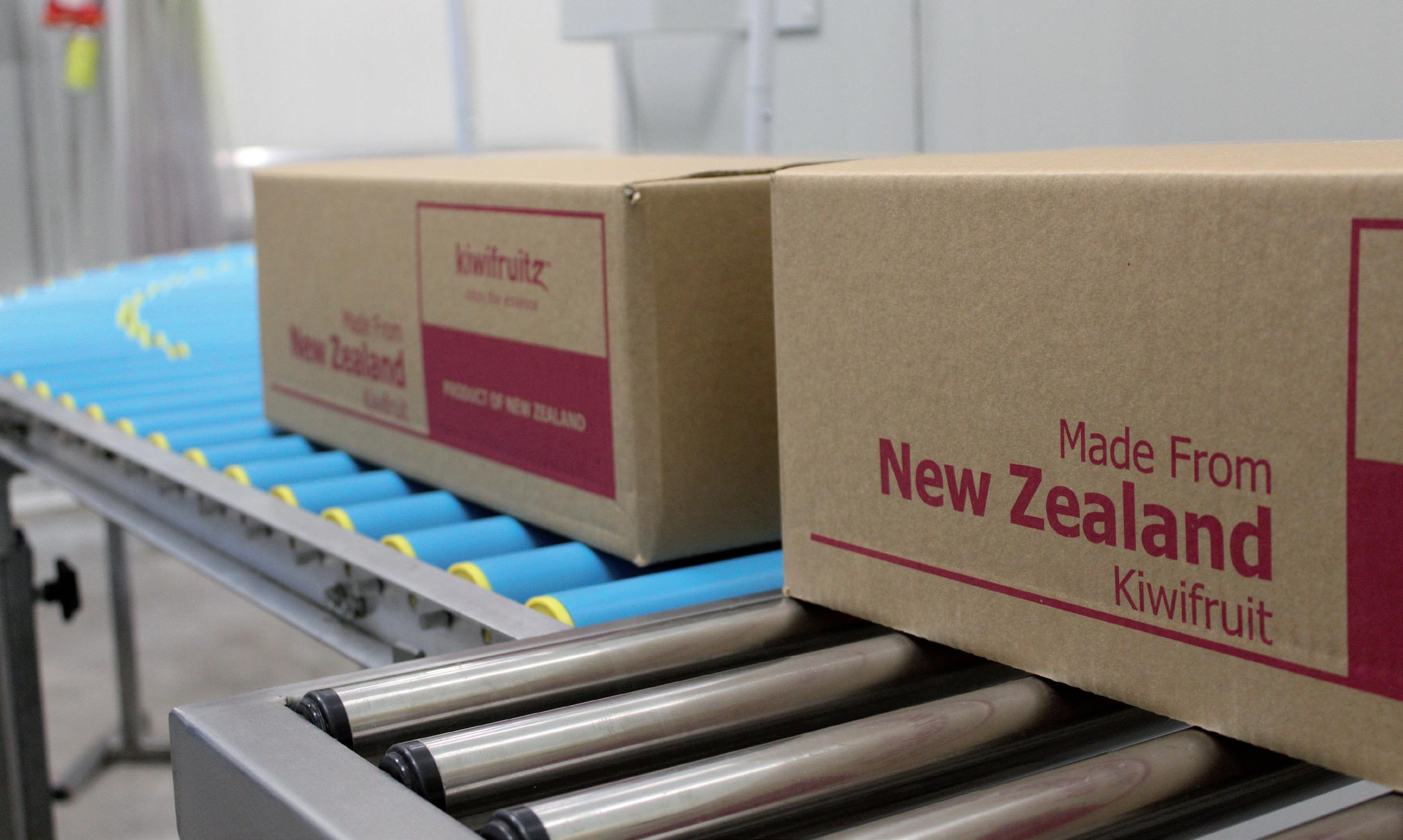
They may not always be easy to spot, but kiwifruit puree and seeds are ingredient big guns, adding to the magic of many products on New Zealand supermarket shelves.
Well aware of exactly which products is the team at a Bay of Plenty-based New Zealand ingredient supply company.
Kiwifruit Processing Company (KPC) Sales Manager Christina Cortesi said various supermarket aisles are home to the Kiwifruit product. Containing either puree or seeds (or both) are, for example, syrups, sauces, biscuits, yoghurt, icecreams, probiotic drinks and jams.
“As a preferred ingredient supplier, we pride ourselves on delivering purees and seeds that elevate the taste, texture, and nutritional value of a wide range of products,” said Cortesi.
AND THE NZ MARKET
Barkers, Kaitaia Fire, and Soul Food are fine examples of New Zealand companies embracing the wonder of what KPC can offer.
Gold kiwifruit puree is used by Barkers in their kids’ juices (kiwifruit and mango juice pulp) and green kiwifruit puree in their immunity juice syrup. Adding a touch of glory to Kaitaia Fire’s fine chilli products is both green kiwifruit puree and seed used in the popular Habanero chilli sauce.
Soul Food, meanwhile, uses green kiwifruit puree in its raw petfood solutions; there’s increasing demand for this in recognition of the excellent digestive properties of kiwifruit, Cortesi said.
In New Zealand, the puree is also used

in alcoholic beverages, with Whakatane’s Mata Brewery leading the charge. The gold and red kiwifruit puree are key ingredients in the company’s awardwinning red and gold cider. That success has led to growing interest from other New Zealand breweries, too.
“At KPC, we are proud to fill a lead role in supporting NZ’s domestic food and beverage companies that inspire the rest of the world with the kiwifruit flavour profile,” she said.
“We rely on our New Zealand market to encourage the rest of the world to experiment with all the different Kiwifruit varieties; everyone knows green, now we have gold and red in the market too.”
While Zespri Ruby Red kiwifruit has been available within the commercial market in New Zealand for almost four years, it has only been tested in products over the last two to three years, for example, as a dairy syrup included in yoghurt and in the alcoholic beverage sector in ciders.



The ingredients supplied by KPC have a place in shopping baskets internationally too, as about 95 percent of KPC products are exported, with the company recognised as a global leader in premium kiwifruit purees and seeds. In overseas markets, its ingredients are used not only in drinks and foods but also in skincare.
KPC has existed for more than 20 years. Over that time, as many as 20 countries have been happy to do business with this company that celebrates the champion of New Zealand’s horticulture – the kiwifruit. Rich in vitamins, minerals and antioxidants, it has “superfood” status.
The company’s overseas markets span Asia, the Middle East, the USA, Australia and Europe. Asia is the main market with South Korea leading the way, followed by Taiwan, Japan and Thailand.
“Green kiwifruit puree is the most popular internationally. People recognise that green kiwifruit is very high in digestive enzymes, and internationally people eat this with purpose,” said Cortesi.
Overseas, the puree is used predominantly in beverages (mostly non-
alcoholic) such as green smoothies, which are big in southern Korea and Japan. In Japan, gold kiwifruit jelly is also a thing.
In Taiwan, green and gold beverage options are both popular. In Dubai, the green puree is purchased as a key ingredient in juices. In the United States, it is used in cocktail syrups.
As for the European market, the interest is predominantly in seeds. It is utilised within the cosmetic and nutraceutical sectors because its high omega-3 and six oils offer good hydration for cosmetic products, Christina explains.
KPC also supplies Costco in both Australia and New Zealand with green kiwifruit puree as a meat tenderiser. It is used to create Bulgogi sauce (a Korean beef marinade) for their beef packs.
Exactly what KPC puree and seeds are used for is far from a finite matter. Thanks to ongoing research and development, there are endless possibilities for innovation and excellence. Cortesi added that the arrival of gold and red kiwifruit to the market in recent years brings with it various opportunities.
“The opportunity for growth with gold
A comprehensive guide for the grocery, hospitality, on & off-premise drink buyers.
We turn the spotlight on the sector, looking at emerging brands, functional drinks, the rise of healthier drinks and changes to existing brands as they reformulate or resize.
and red is still continuing within the food and beverage sector,” said Cortesi, citing the advent of confectionery products as an example.
In Japan, the puree is being added to a company’s confectionery line – a red kiwi gummy is under research and development. Other developments are being noted within promotional products. Barkers, for example, produced a seasonal dessert sauce that was promoted as a perfect pavlova topping.
“Gold and red kiwifruit are both new internationally, and NZ has an important role to play in inspiring the world with all the varieties of kiwifruit. KPC has an important role to play within that.”
It may be deemed not too difficult a role in that KPC is loud and proud about being an iconic NZ fruit and ingredient supplier of high repute.
Kiwifruit Processing Company 2021 Limited (KPC) is based in Te Puna, Bay of Plenty. Its owners are a Māori collective - Te Whai Ao Group Ltd. The collective has existed since the 1960s when it became an early kiwifruit orchard owner. The company is proud that it now has full supply chain coverage, from land, orchard and packhouse to (with the 2021 acquisition) processing facility.






Congratulations to Thalia Osborne from Ash Ridge, who has been named the 2025 Tonnellerie de Mercurey North Island Young Winemaker of the Year. The competition took place on 24 July at EIT in Hawke’s Bay, where Thalia impressed across multiple challenges to secure the top spot and earn her place in the national final.

Ash Ridge
Thalia also won the Indevin Wine Judging Section and delivered the top speech in the Fruitfed Supplies category. She said she was thrilled her hard work had paid off.
Second place went to Toby Priestley from Linden Estate in the Esk Valley, who won the Judges’ Choice and In Market sections. In these sections, contestants created a Bordeaux blend for the US market and pitched it to a panel.
The other two competitors were Mikaela Salmon from Ash Ridge and Caitlyn Moeller from EIT. All four finalists won at least one section. Caitlyn took out the Constellation Brands Laboratory Section, while

Mikaela won the lively Vin Olympics, held in front of a lunchtime crowd. The event was followed by a gourmet BBQ hosted by Fruitfed Supplies.
As the overall winner, Thalia received a Fruitfed Supplies Field Trip, wine storage with Personal Cellar for a year, and $1,000 in cash.
Thalia will go on to compete in the national final at Lincoln University in August. The following evening, all national finalists will deliver their speeches at the New Zealand Wine 2025 Celebration Dinner at Te Pae, where the overall winner will be announced.

the essence of 100% New Zealand honey with our cutting-edge technology. G&S Foods brings you a versatile ingredient that transforms confectionery, health bars, soups, sauces, gravies, custards, cosmetics, pet food, and milk items.
• Healthy Sugar Alternative: Perfect for dry bakery premixes, showcasing our dedication to enhancing the value of honey.
• Innovative Solutions for Baking: Choose from New Zealand honey varietals to add delicious honey powder sweetness and flavour to your food creations..
• �������������������������� We offer 5kg standard bulk packaging for powders. However, we are flexible and can also accommodate specific smaller bag sizes for one-off recipe applications upon request.


Marisa Bidois
Tipping is a regular talking point in our industry and with good reason. I was recently invited onto Breakfast to discuss the topic, after a Sydney restaurant made headlines for adding a tip to a diner’s bill without asking. The story reignited debate on whether Australia is edging toward the US tipping model and raised questions for us here in Aotearoa too.
In New Zealand, tipping remains voluntary and for many of us in the hospitality industry, that’s a strength. Because our staff aren’t reliant on tips to earn a living wage, a tip here feels different. It’s not an obligation it’s a positive gesture from a guest who wants to acknowledge great service.
That said, tips are still meaningful. They make a difference to our teams. When a guest chooses to leave a tip, they’re saying, “You made my experience better.” That kind of feedback is powerful and encouraging a culture that celebrates genuine appreciation helps build morale, pride, and a sense of ownership.
As tipping becomes more common, the responsibility is on us as to handle it well. That starts with transparency. Whether you split tips equally, allocate them to specific team members, or use a pooled system, ensure it’s clear, fair, and understood. Staff deserve to know how tips are distributed, and diners want confidence their gesture is going to the right place.
Feedback from the dining public on
tipping prompts on payment terminals are that some find them confronting and others find them helpful. The key is in how they’re framed. Tipping prompts should feel like an invitation not a pressure point. If you’re using a digital prompt in your venue, make sure the language aligns with your business. Service charges for larger groups can also work especially when clearly explained upfront. For many operators, it helps cover the added workload and ensures staff are looked after on big, busy bookings. Just be transparent and consistent.
Ultimately, we want a culture where great service is the standard and tipping is a valued bonus. When done right, tipping reinforces the human connection at the heart of hospitality. It can be a win-win: a motivator for teams and a way for guests can show appreciation for great service.
If you’ve got views on tipping or want support developing your venue’s policy, get in touch with us at the Restaurant Association: info@restaurantnz.co.nz. We’re here to help you get it right.




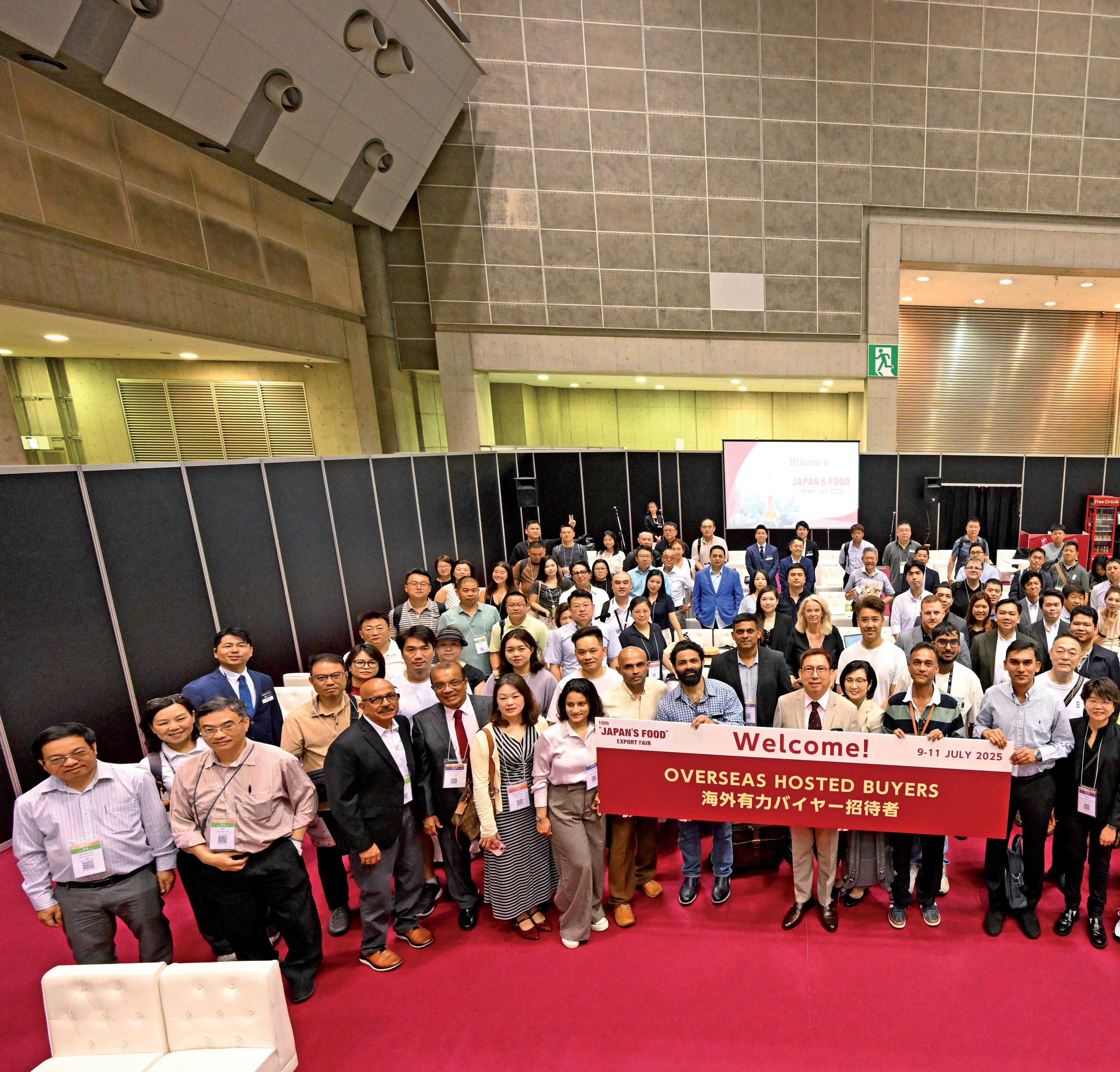
The “JAPAN’S FOOD” EXPORT
FAIR - Summer Edition welcomed thousands of global food and beverage professionals to Tokyo Big Sight earlier this month.
The show delivered three dynamic days of trade, innovation, and cultural connection. This edition welcomed 19,980 visitors and featured 617 exhibitors showcasing the finest exportready Japanese food and beverages.
Attendees explored an unparalleled array of offerings, from premium sake and melt-in-your-mouth cheesecakes to authentic sushi preparation tools and
elegant Japanese tableware.
The fair attracted importers, distributors, and retailers seeking to bring a taste of Japan to international markets. It was more than a trade event; it was a celebration of Japanese culinary heritage and craftsmanship.
From business card exchanges to in-depth product tastings, cultural traditions blended seamlessly with business efficiency.
The first day set the tone
with eager buyers and exhibitors meeting face-toface, sampling products, and building initial connections.
The Hosted Buyers programme allowed exclusive access to networking lounges, guided tours, and appointment systems designed to maximise their time on the floor.
By the second day, the aisles were alive with activity as deals were locked in and attendees discovered everything from regional
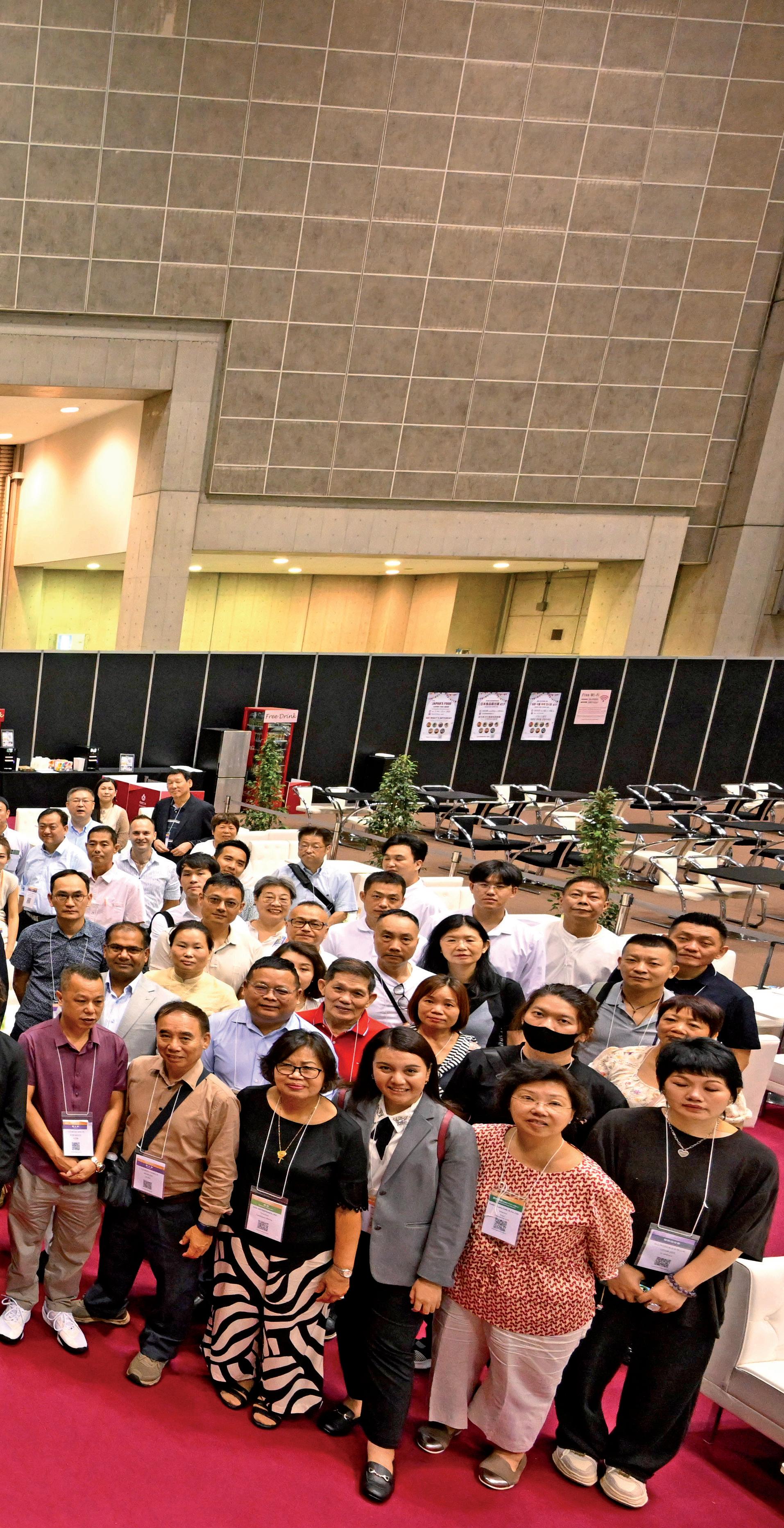
sweet potato cakes to artisanal glassware. There was plenty of indulgence from visitors craving savoury takoyaki or eyeing pictureperfect taiyaki.
Along with F&B offerings, visitors explored stylish plates, aesthetically designed cups, and sushi okes (hangiri), expanding their sourcing to include more than just ingredients.
The final day concluded with an air of achievement as attendees left with not only
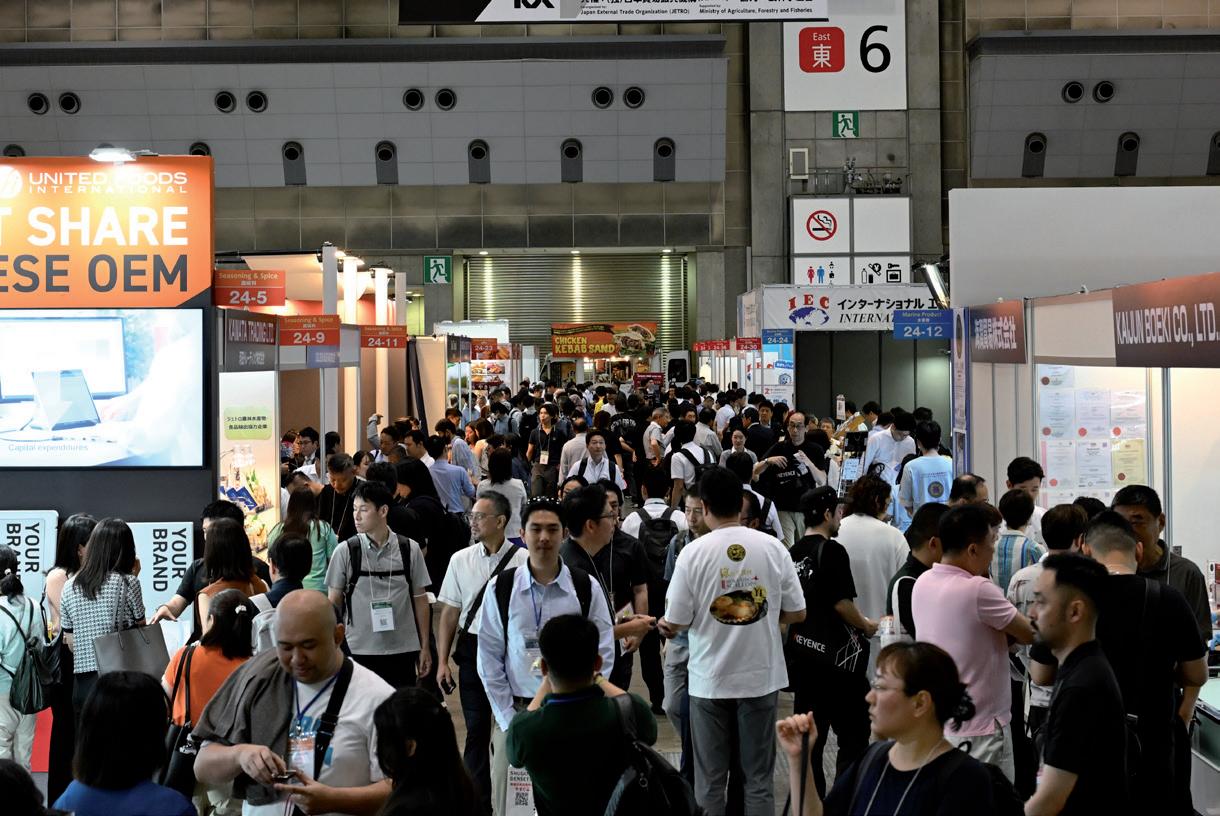
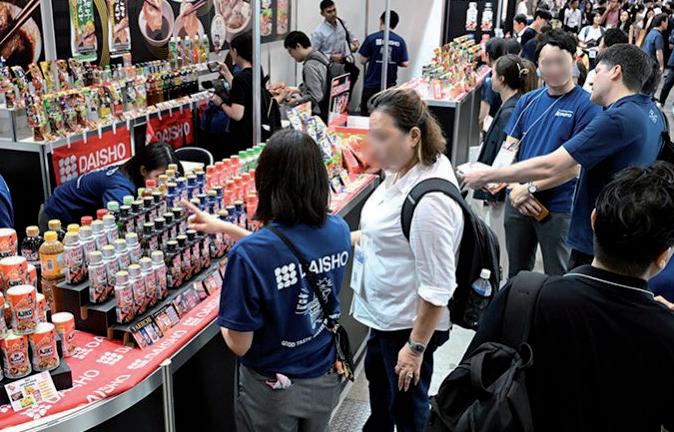

new product innovation and insights but also a deeper understanding of Japanese business practices and hospitality.
“JAPAN’S FOOD” EXPORT FAIR continues to strengthen Japan’s role as a global culinary ambassador, creating a vital platform for innovation, exchange, and growth.
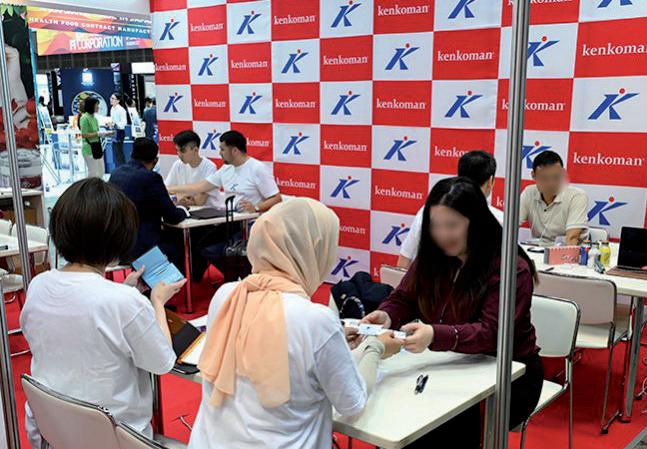




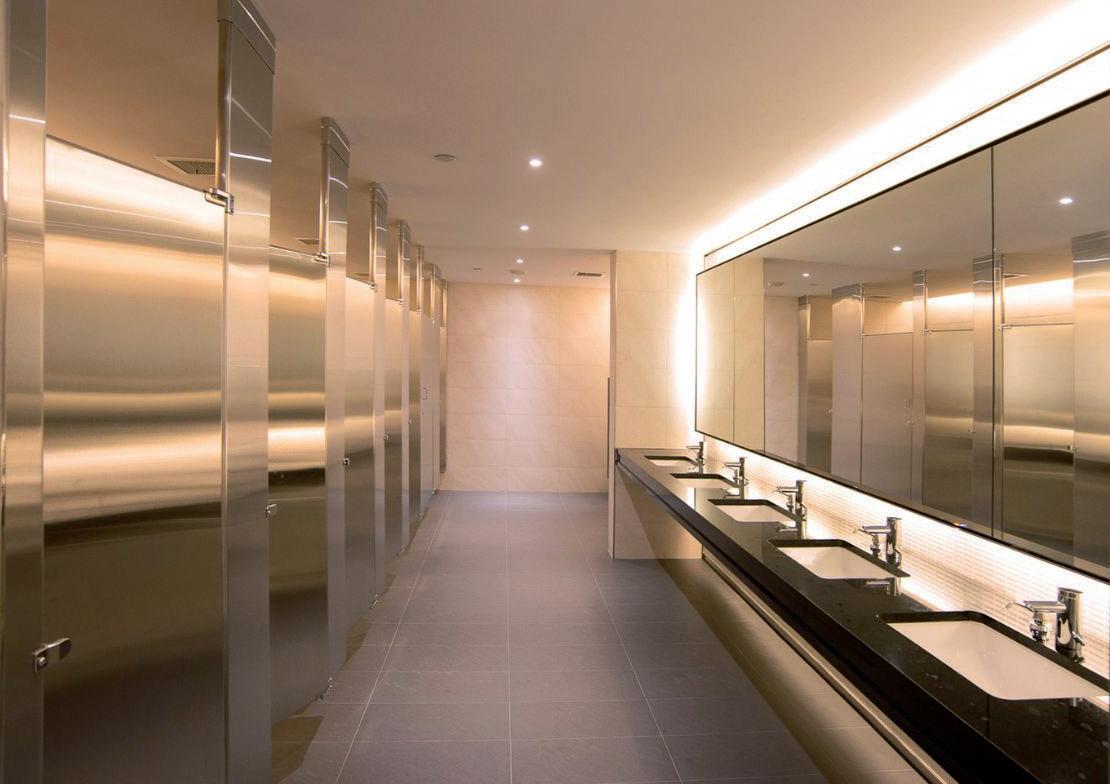
In hospitality, every touchpoint shapes a customer’s perception of a venue. While menus, service, and ambiance receive most of the attention, it is often the least glamorous space that can make the biggest impact: the bathroom.
Aclean, well-presented restaurant bathroom is no longer just a basic expectation. It is a subtle yet powerful reflection of the restaurant’s overall hygiene, attention to detail, and respect for its guests. As diners become more discerning, the standard of the bathroom has emerged as a key factor influencing return visits, reviews, and even bookings.
Recent international studies have found a direct correlation between the quality of bathroom amenities and consumer trust in a food establishment. If the facilities are clean, well-stocked, and thoughtfully designed, patrons feel confident that the kitchen operates to the same standard. Conversely, a neglected or dated bathroom can create lingering doubts about food safety and staff professionalism, regardless of how impressive the meal may have been.
Designers and restaurateurs are responding. High-end bathroom fit-outs, once reserved for boutique hotels and luxury venues, are now appearing in casual dining and mid-tier establishments. From floor-to-ceiling tiles and curated scent diffusers to
touchless fittings and artful lighting, bathrooms are being reimagined as part of the overall brand experience. In cities like Auckland, Sydney, and Melbourne, it is not uncommon to see restaurant bathrooms featuring panoramic views, designer basins, and local artisan products in the handwash selection. These upgrades are not simply aesthetic choices. They speak directly to a shift in how diners assess value. For many customers, especially women and business clientele, the quality of the bathroom is weighted as heavily as the food or service. It offers reassurance that the venue is maintained to a high standard throughout, not just where it is visible. Moreover, in the age of online reviews and social media, details matter. An elegant bathroom can become part of the customer journey, mentioned in reviews or even photographed and shared. Restaurants that invest in this space often find it pays off in reputation and guest satisfaction. Beyond cleanliness and appearance, functionality is also under scrutiny. Easy-to-use fittings, adequate space, baby-changing facilities, and accessibility features are part

of creating a thoughtful, inclusive environment that patrons remember. Ultimately, a restaurant bathroom is more than a utility; it is a mirror of the establishment’s values. Cleanliness is non-negotiable, but going a step
further, offering beauty, comfort, and functionality, transforms the bathroom from afterthought to asset. For operators looking to stand out in a competitive market, it is a detail worth elevating.



In hospitality, no space should be overlooked. If a bathroom can make or break a customer’s trust, it is time to make it part of the experience because diners are paying attention.
What makes a 5-star experience? It’s all the little things. From the moment your guest sets foot on the property, he or she begins evaluating every little detail.
Replaces a table’s existing screw-in feet
Stabilises tables with a press of the table top
Internal locks provide unrivalled stability
Enables the alignment of table tops
Independently tested by FIRA

Exceeds - international standards for Stability, Strength, Durability & Safety (BS EN 581-1:2006 & BS EN 581-3:2017)
Install in seconds. No tools required Saves you time, money and frustration while improving your customers’ experience
Ph: 09 444 9078 I Email: sales@cooktech.co.nz Web: www.cooktech.co.nz




Hospitality is a people business, which is why a humancentric approach to designing spaces for all customers is an essential element for successful spaces.
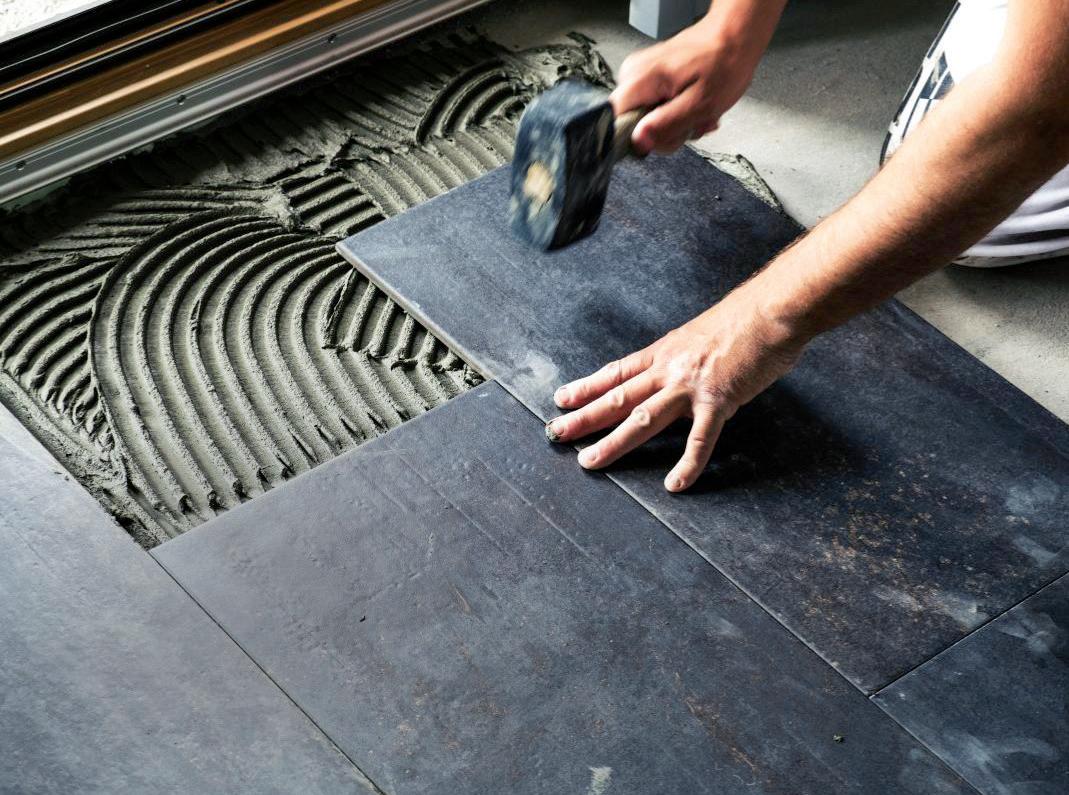
For Gerrick Numan, Director at Millé, first impressions are everything. He described it as an emotional experience for the customer to make the connection from street view to entering the premise, and before even ordering, they would have formed an opinion based on lighting, layout, smell, noise, comfort, music, spatial clarity and countless other unconscious things.
Numan said creating a space that is welcoming and comfortable is an important step, but it is more essential to keep it simple.
“Customers should feel like the space was made for them, not just made to impress. And over designing leads to budget blowouts and it doesn’t help the financial model,” he said.
Some of Numan’s top tips included clear spatial
planning, comfortable seating, and warm lighting, which he said go a long way. He also warned of how easy it is to over design spaces.
When designing spaces like bathrooms, Numan said it is essential to use resilient materials, to withstand the challenges of a wet and often humid environment, and ensure longevity, ease of maintenance and safety.
Continuing the design of the rest of the venue into the bathroom is another key factor. This will expand the customer’s experience and create an immersive ambience. Numan said a great addition that is often overlooked is speakers and music in bathrooms.
In order to create a luxurious bathroom space, Numan suggested using high-quality tiles. He said that it is best to use tile or vinyl to mid height for easy cleaning.
Like furniture, Numan said texture is a friend.
“If you have texture in your materials, small stains and marks disappear. Flat colours show imperfections and dirt very clearly.”
Technology and innovation have largely influenced bathroom design trends, especially for hospitality settings. He said products like over sink tap and hand dryer combinations have been a step forward, and that automatic aroma sprays are a great addition to keep the space pleasant for all guests.
Sustainability has also been a game changer, as there are more sustainable materials available on the market now than ever before.
“The most sustainable thing you can do (for your bank balance too) is to utilise an existing fit out, by
simply altering the finishes, branding and perhaps furniture to establish a new identity. Renovating a venue will cost you 75 percent less than starting new.”
Overall, he said it often comes down to staff systems to ensure consistent maintenance and cleaning every hour.
Fittings are expensive, and every mistake costs money, not just to fix, but in lost time, lost revenue, and stress. Numan said it’s not just about designing for today, but designing for five years from now. Therefore, it’s important to look at growth, workflow, staff movements, and how the venue can scale or shift over time. Strategic planning is what separates a beautiful space from a profitable business.

“SilverChef changed the game for us. We were able to buy better equipment, and they made our dream possible because we were able to change and adapt.”
Avi Cohen SilverChef customer
For 35+ years SilverChef Group has supported more than 85,000 hospitality customers, investing $2.6 Billion+ into the hospitality equipment industry. We understand hospitality and its challenges, and we know how to support you at every stage of your business journey.
With the flexibility to change and upgrade equipment at any time, and low weekly payments that are 100% tax deductible, Rent-Try-Buy® is funding built for hospitality.
To learn more about the benefits of Rent-Try-Buy,® talk to our team of hospitality finance experts today.




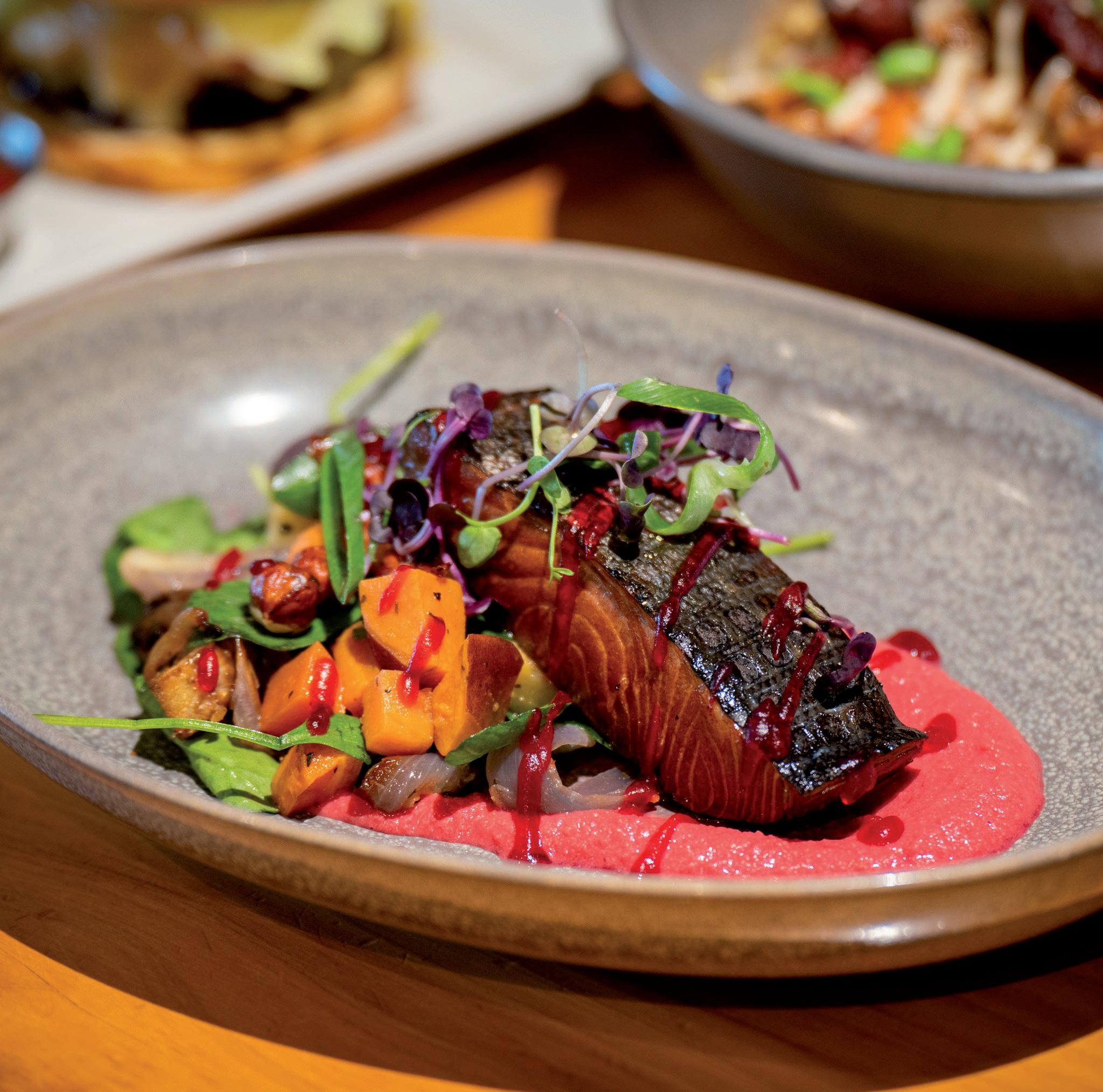

The
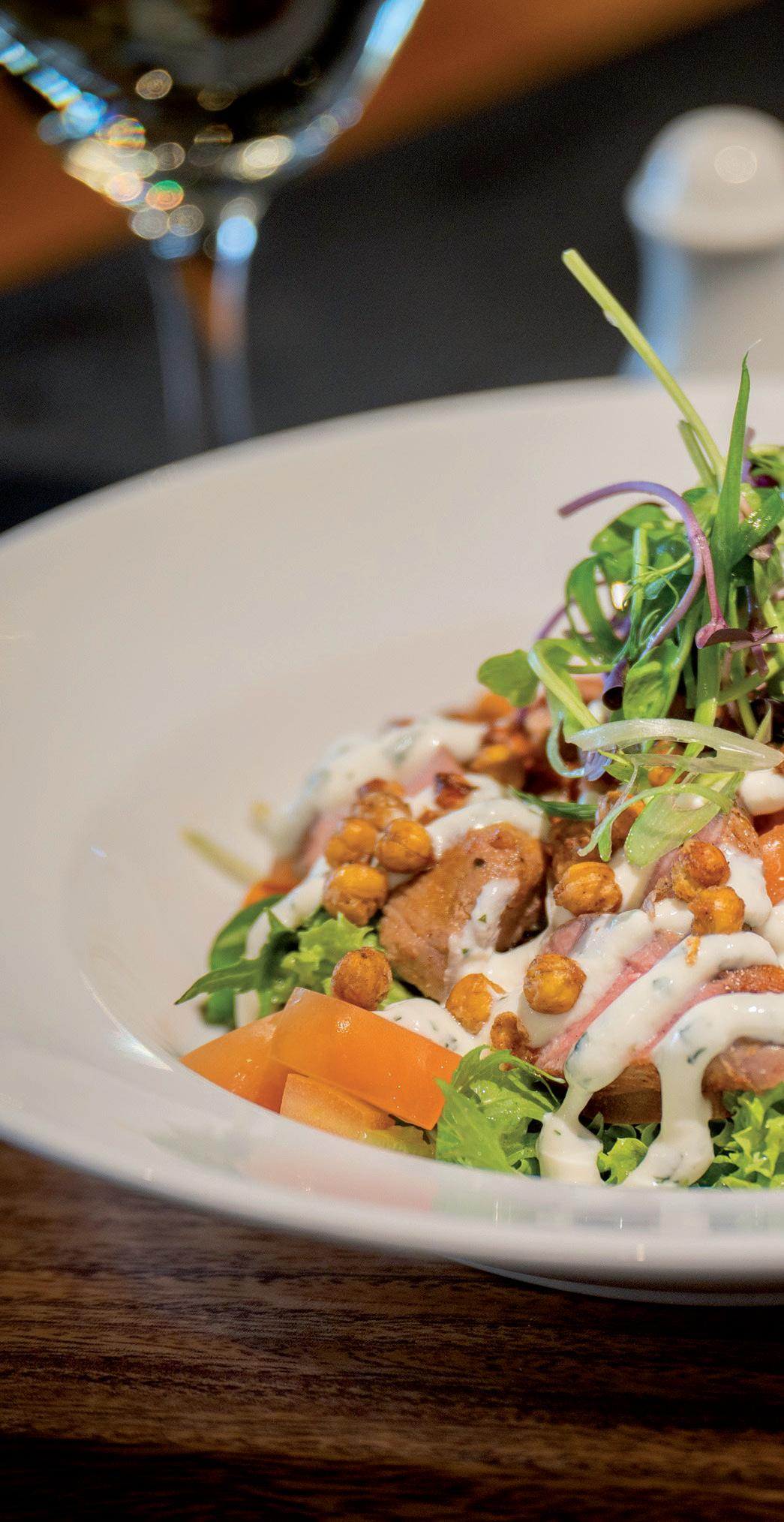
Taking home the title of Chef of the Year at the 2025 Hospitality Awards was a recognition that Cam Davies was honoured to have won.
He said this accolade was a target for the year, and to have achieved it was a humbling moment. He said it was the one he wanted to add to the shelf after various achievements over the past 12 months.
Davies started in the industry washing dishes at a local pub as a 12-year-old, which he admitted was over 25 years ago now. He trained at Ara in Christchurch and worked at local restaurants and hotels before getting his
big break in the super yacht industry. He then spent eight years offshore with Super Yachts and a two-year stint in London.
He moved back to New Zealand and settled in Te Anau with his partner Selina and two boys. He purchased The Fat Duck in 2016 and said he was just hitting his straps in 2025.
Over his career, Davies said there had been plenty of highlights, but some have stood out as major milestones. His list included winning Toque d’Ór back in 2005,

his time spent cooking for some big-named celebrities on Super Yachts, Global Chef Challenge Pacific Rim Semi Final Winner 2023, placing eighth at the Global Chef Challenge World Final in 2024, and most recently being named Hospitality New Zealand Chef of the Year for 2025.
He said purchasing The Fat Duck in 2016 was a dream come true as he had always strived to run his own restaurant.
The Fat Duck was also named as the Supreme Winner of the Top 50 Gastropubs. He added that to help lead his amazing team with his wife, Selina, to achieve the status of the best Gastropub in the country had topped any personal awards he has ever won.
“This one was truly special,” he said.
Davies said The Fat Duck has become a popular landmark in Te Anau because

of its great food, great service and hospitality, which goes above and beyond.
“Behind all that, we have strong company values that are the foundation of everything we do, but we really focus on our people. That’s our team, ourselves, our customers and our community.”
As for future projects that Davies and The Fat Duck have in the pipeline, he said to watch this space.
BEHIND ALL THAT, WE HAVE STRONG COMPANY VALUES THAT ARE THE FOUNDATION OF EVERYTHING WE DO, BUT WE REALLY FOCUS ON OUR PEOPLE.
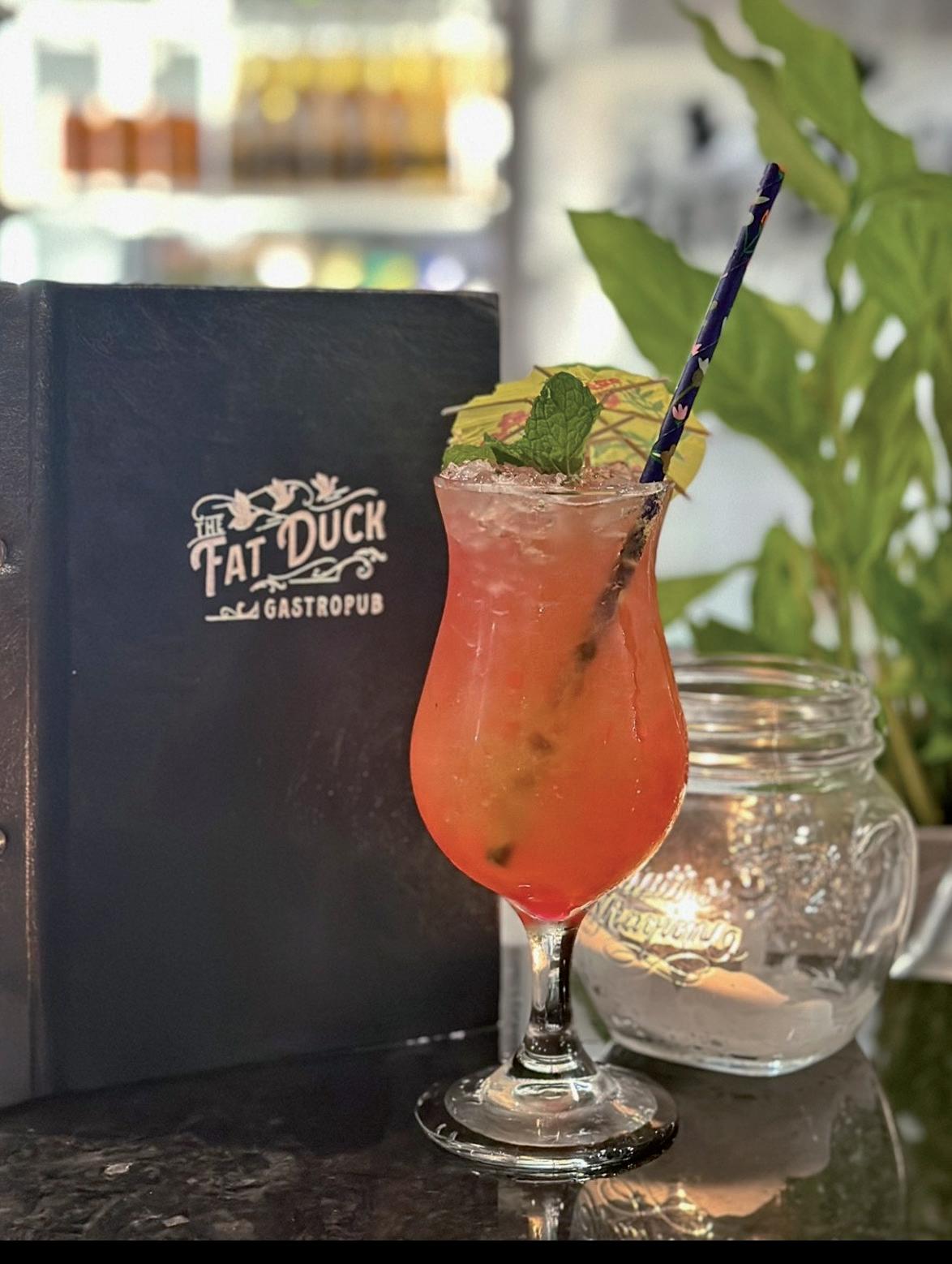




A successful NZ Chefs Championships at Fine Foods New Zealand 2025 saw local talent at its finest, as chefs from across the country showcased their best culinary skills.
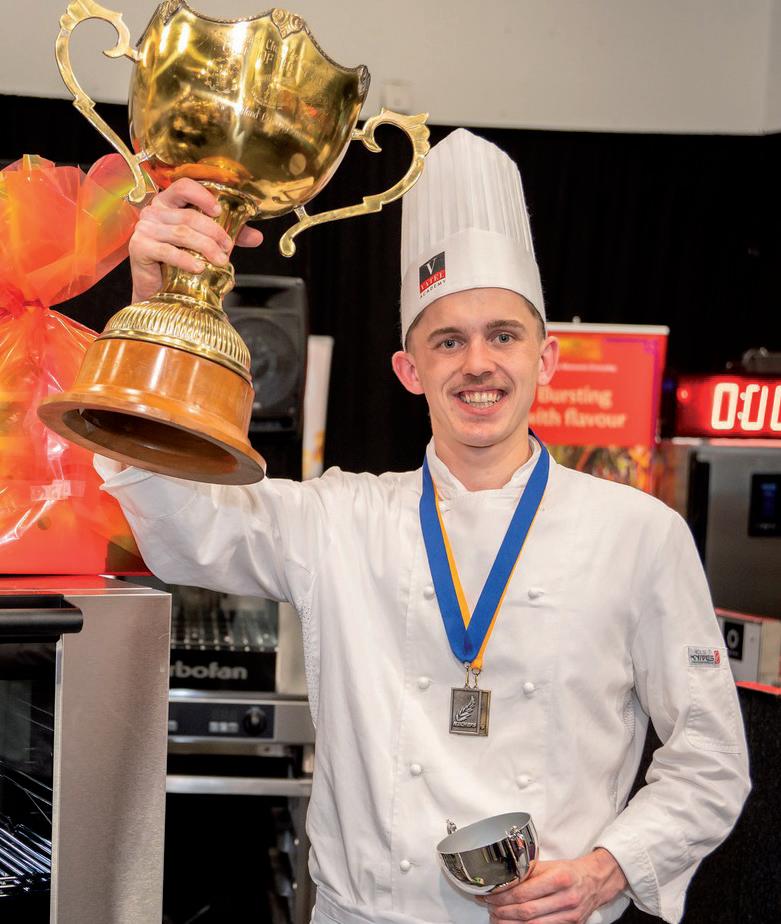
NZ Chef of the Year was won by Sam Gradowski-Smith, who had previously won the Emerging Chef of the Year. Gradowski-Smith said that gaining experience by working in modern kitchen environments was a primary career objective, and experiences like these allowed him to join the brigade of young talent in the industry.
Chef Achira Kularatine, who travelled from South Canterbury, was named NZ Pastry Chef of the Year. With a diploma in Sugar Flower Wedding Cake Structure, Kularatine had previously won a gold medal in pastry art at the Luxembourg Culinary World Cup in 2018, and Best Pastry Chef of the Year at Emirates Salon Culinaire 2017 in Dubai, and was awarded a bronze medal at New Zealand Pastry Chef of the Year 2024.
New Zealand Defence Force chef Blake Cranch was named NZ Emerging Chef of the year. Shannon Fryer, NZ Chefs Association President, said it was great to see the Defence Force have a strong presence at all four days of the championships.
Rick Stephen, Global Vice President of the World Chefs Association, was also in Auckland for this year’s championships. Stephen said that competitions were incredibly important for a chef’s personal growth.
“When I used to compete in the competition, we used to train and practice, and then you try and develop
techniques or different dishes that you probably would not do in a normal circumstance. So I used to always think that I'd virtually gain four years of training just from that one competition,” he said.
Stephen considered hygiene, food waste and sustainability as the most important elements for competing chefs to have during competitions. He said that if chefs are cooking for four, then cook for four, don’t cook for six or eight. Judges will be on the lookout for how many products chefs use and how much of that ends up on the plate, as well as their techniques.
“We want to ensure that it’s a cooking competition, so we want to see techniques. We don’t want to see chefs using all these moulds and things like that. Use one or two, but we want to see chefs using some hand-to-hand techniques and utilisation of all the products.”
He added that the most crucial element to consider in a competition was the time frame.
“If you’re given two hours to do it, then make sure you finish in two hours.”
Competitions like the NZ Chef Championships are essential for young and emerging chefs in Stephen’s opinion. He said competitions are designed to test chefs' abilities. Mistakes are welcome, as competitors are able to learn from those mistakes and elevate their future dishes. He reiterated the importance of not giving up, learning and gaining feedback. He added that it was better for young chefs to have constructive feedback so they can learn and go on to the next step.
According to Stephen, every chef should consider entering competitions, as it isn’t competing against others; it’s competing against themselves. Every chef starts with 100 marks and will lose points for making mistakes or doing something wrong. He said that practice makes perfect, and chefs will become attuned to proper procedures, but a chef always has to have the passion to succeed.
“I always say cook from the heart. Cook what you feel is great, just make it look good on the plate.”
Fryer said planning is underway for the next NZ Chefs Hospitality Championships, which will be held at MIT in October 2026. He said the aim is to have the Culinary Arts component as a Worldchefs-endorsed competition. This will assist those who have attended a Worldchefs Judges workshop in 2023 or 2025 in moving up the pathway to become official Worldchefs Certified Judges. Ideally, an International Pastry Judge will also be included to present a masterclass and specialist workshop on leading trends in Patisserie.

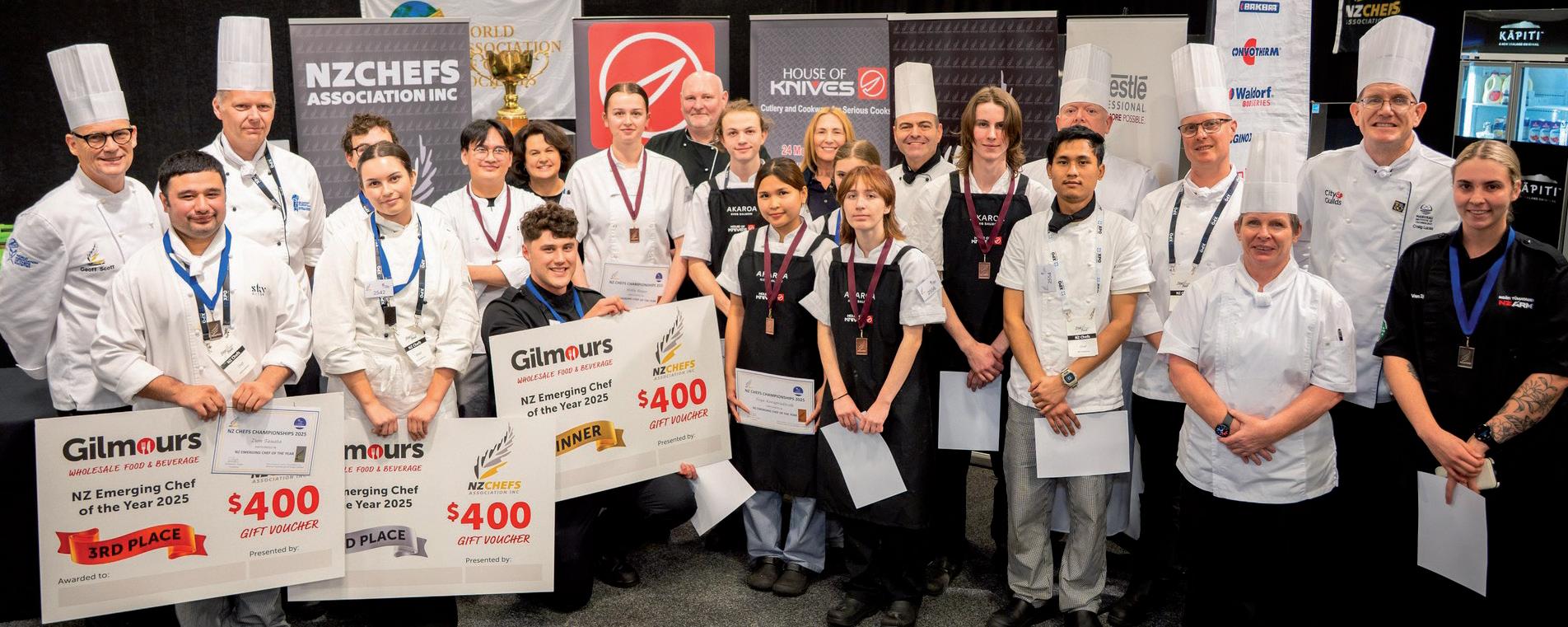

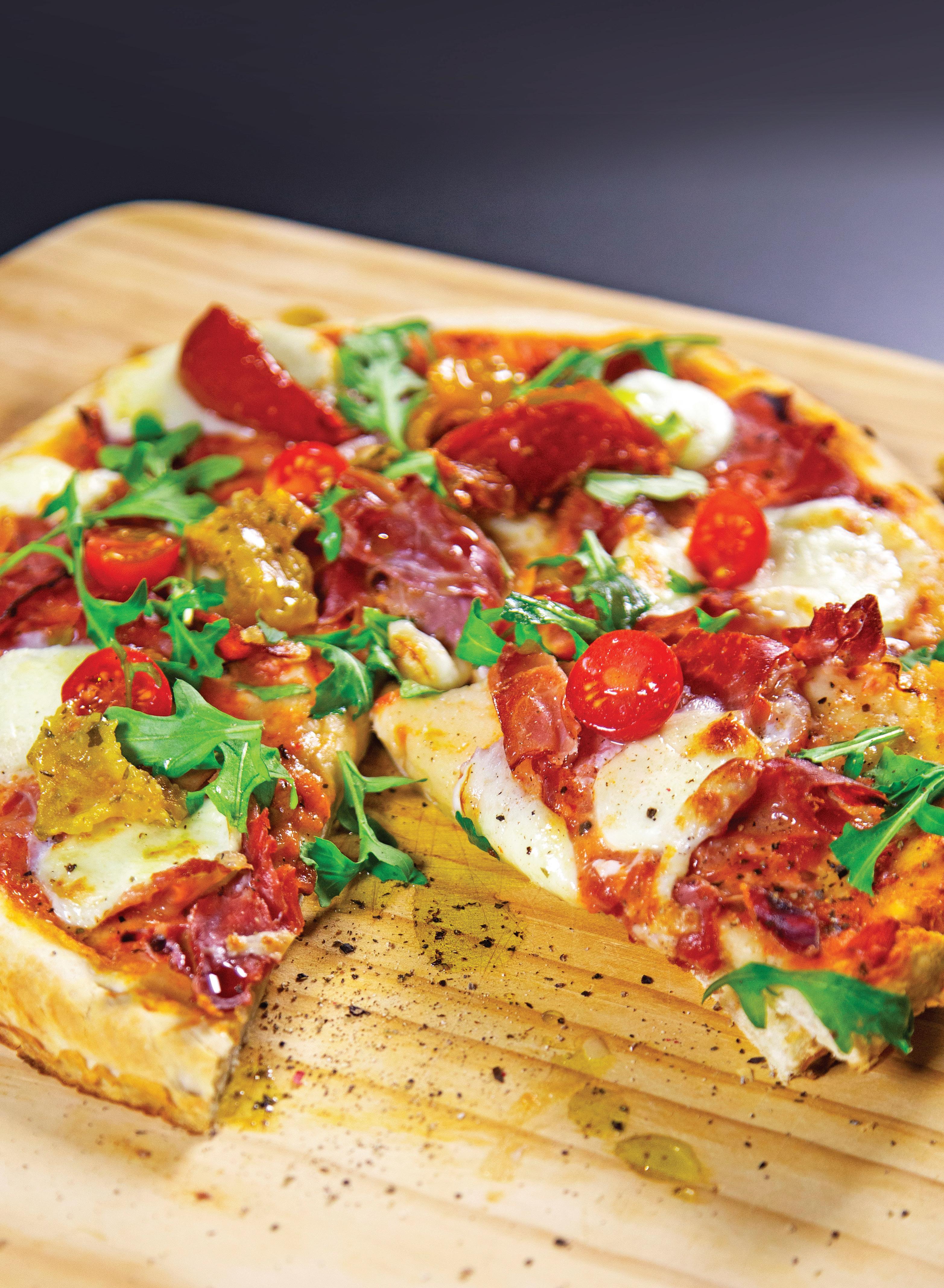
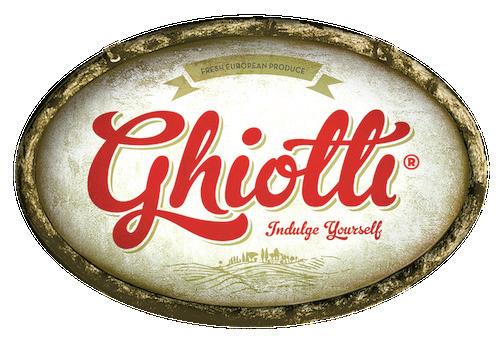
Despite rising prices, Gen Z is doubling down on fast food and bringing a new set of expectations with every order.
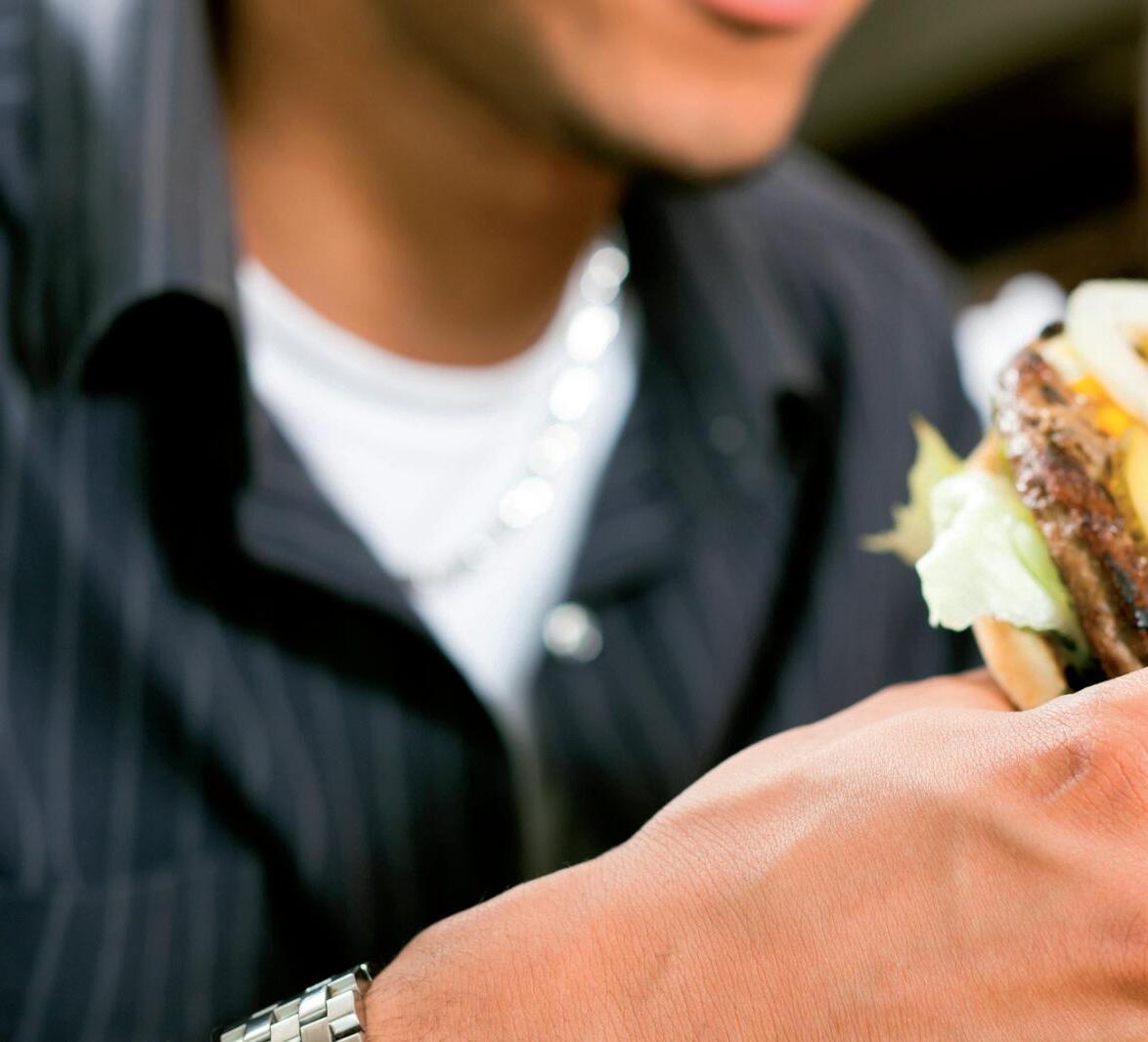

JENNA SHUSTER SVP, Rearch3 Insights
We recently engaged with over 1,000 Americans (including nearly 500 Gen Z consumers) about their quick-service restaurant (QSR) habits. Our findings reveal that Gen Z isn’t stepping away from fast food; they’re redefining how it fits into their routines and what they want from the experience.
QSRs are still winning Gen Z’s wallets
A full 51 percent of Gen Z report visiting QSRs more frequently than a year ago, and the same percentage say they’re spending more, even as 80 percent agree prices have increased. Why? Convenience, lifestyle shifts, and even grocery inflation are driving a renewed reliance on fast food restaurants and cafes.
As one 25-year-old in the Midwest put it: “Groceries are so expensive. It’s
cheaper to eat out sometimes.” Others cite packed schedules, campus proximity, or working late as reasons for their increased QSR spend.
For Gen Z, value isn’t just about price
Yes, affordability still matters. But what really drives loyalty among this group is quality and ease. When asked what’s most important when choosing a QSR, Gen Z cited quality food (60 percent), convenient locations (48 percent), and speedy service (47 percent). Price-based features like value menus or deals were further down the list.
Chick-fil-A and McDonald’s led the way on both recent purchases and brand love, but other players like Shake Shack and Panera Bread are also gaining ground, especially when they’re seen as tech-forward.
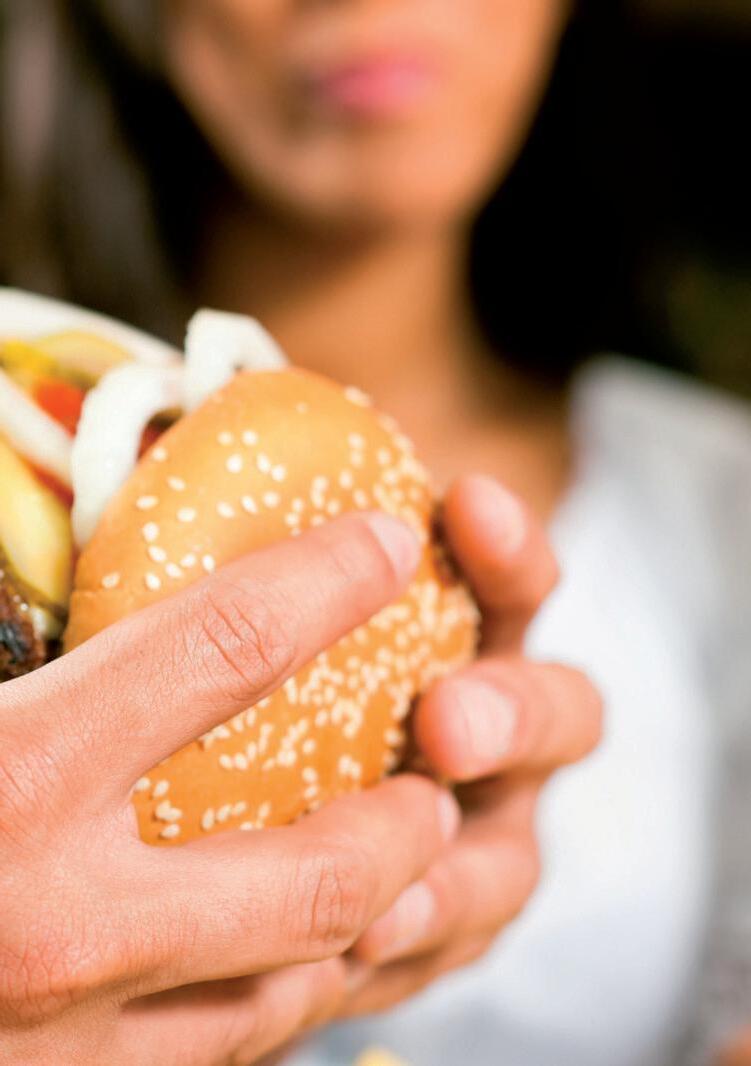
Tech is no longer a novelty; it’s expected
More than 90 percent of Gen Z say they’re interested in tech-enabled features at QSRs, and 79 percent are intrigued by the idea of AI-powered solutions. But make no mistake: they’re not chasing gimmicks. They want tech that saves time, reduces friction, and personalises the experience.
Top Gen Z wishlist items include:
• Mobile ordering (57 percent)
• Self-service kiosks (49 percent)
• Tablet ordering at tables (46 percent)
They’re also open to AI that helps streamline operations or personalises the menu based on past orders. Think smarter recommendations, shorter waits, and faster fulfilment, not robotic baristas.
“I think artificial intelligence would help me to be able to pick up orders faster and clock them into the system faster than people at the register,” said a 20-year-old research participant.
Which brands are getting tech right?
When asked which QSRs are already delivering on the AI opportunity, or have the potential to, Gen Z pointed to Dunkin’, Starbucks, Chipotle, and McDonald’s. These brands are known for integrating mobile apps, loyalty programs, and touchless payments in ways that feel seamless and useful.
But the field is wide open. Gen Z is still forming habits and loyalties, and they’re paying attention to which brands prioritise convenience, customisation, and quality.
4 tips for earning Gen Z loyalty today For QSR operators looking to futureproof their strategies, here are four takeaways based on our research:
• Lean into digital self-service: From ordering to payment, Gen Z prefers a tech-driven experience, especially when it means fewer delays and fewer errors.
• Personalise wherever possible: Use order history or preferences to suggest relevant items or discounts. The key is relevance, not overload.
• Maintain high quality standards: Taste and freshness still matter most. Tech should support, not replace, what’s on the plate.
• Listen in new ways: Modern insight tools like mobile-first surveys and video feedback are helping brands stay tuned into Gen Z’s fast-evolving expectations.
• Deliver more value for the price: Gen Z knows QSRs are getting more expensive, and they’re still showing up. But rising costs come with rising expectations around the above points surrounding speed, quality, personalisation, and tech-enabled convenience.
Gen Z’s relationship with fast food is shifting, but it’s not going away. They’re still loyal customers, and understanding them requires the right approach to market research and consumer insights, as traditional feedback tools may miss the nuance behind Gen Z’s decisions. For this ongoing research study, we used a conversational, mobilebased approach to hear directly from consumers in the moments that matter. To keep pace with Gen Z’s shifting expectations, QSRs need more than a snapshot in time; they need an alwayson, conversational approach that allows them to engage with young consumers regularly, surface emerging trends, and adapt in real time.
About the author:
Jenna Shuster is a seasoned researcher and consultant at Reach3 Insights (www. reach3insights.com). With more than a decade experience in the insights industry, she’s worked with some of the most recognisable brands in consumer goods, retail, consumer health and wellness, pharma, tech and other major industries. She is currently VP at Reach3 Insights, an award-winning research consulting firm that pioneered conversational research approaches and a sister company to the research technology provider Rival Technologies. Prior to Reach3, Jenna held senior roles at Maru/Matchbox and Vision Critical (now called Alida). Jenna holds a BBA from Thompson Rivers University and a Master of Science in Marketing and Consumer Studies from the University of Guelph.





It’s simple. Great food starts with strong local connections. McCain has been supporting Kiwi communities for over 40 years, from the farmers who grow top-quality potatoes to the cafés, restaurants, and takeaway spots that serve them.
McCain fries start with the best-quality potatoes. Here in New Zealand, they’re grown by a group of over 12 local farmers who understand how to get the most from the land. From there, each fry is cut to the right length, with the right potato solids for a higher yield, and that signature golden colour and crisp texture.
But great fries don’t grow in isolation. Strong communities make great food possible, which is why we give back wherever we can.
Whether it’s raising money to help refill freezers and keep families fed during cyclone recovery or partnering with local charities and initiatives, we’re committed to supporting the people who support us.
Sustainability matters too. Because you can’t grow great produce without looking after the land. That’s why we’ve introduced a fourpart Sustainability Strategy, helping local businesses to keep serving up delicious food for years to come.
With McCain Foodservice Solutions, businesses can be confident they’re getting quality products, from one local to another.